February 9
Today is a travel day. We take a luxuriously private bus to carry us along our bumpy six-hour route to the port town of Magangué, stopping for lunch at a very colorful restaurant called El Gustico Costeño. The owners have never hosted a group of photographers before, and are amazed at our enthusiasm for photographing all aspects of the restaurant, including a red jeep that literally pulled into the restaurant to escape the heat. These will give you an idea of the way I was fascinated by the restaurant.
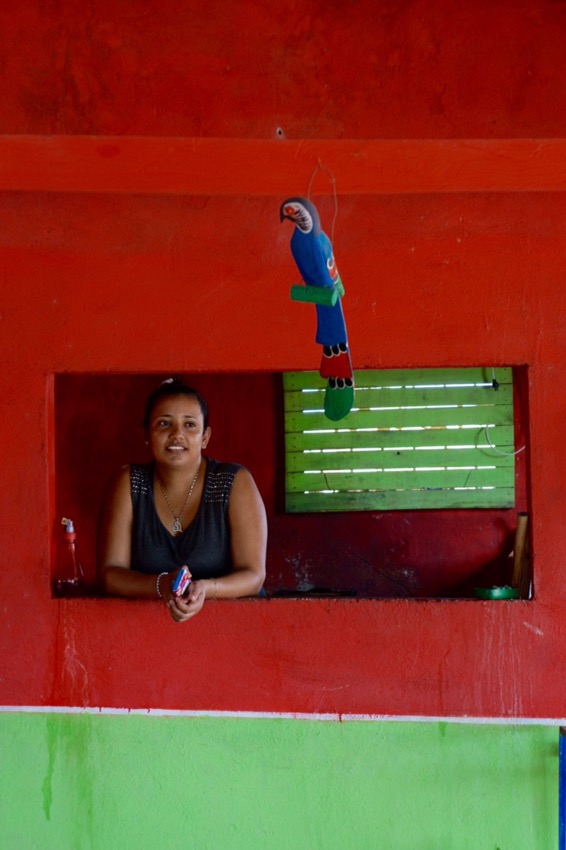 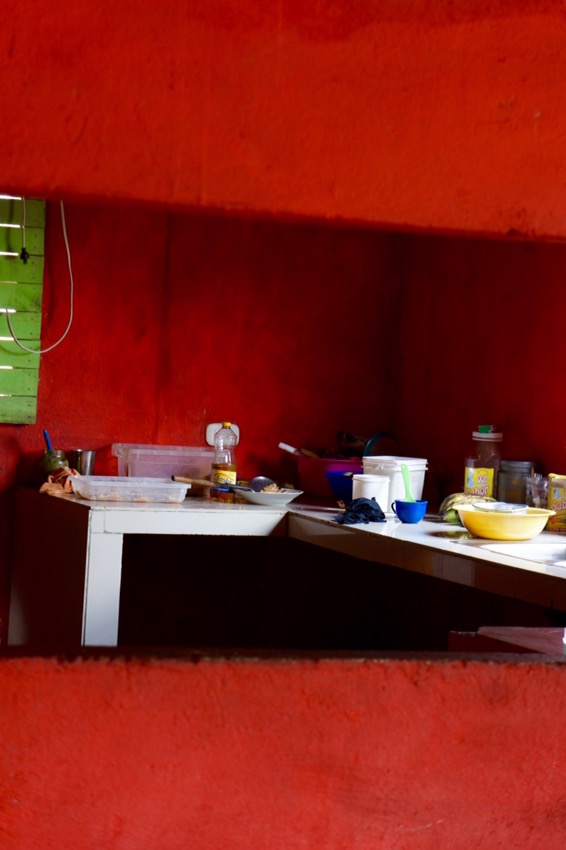
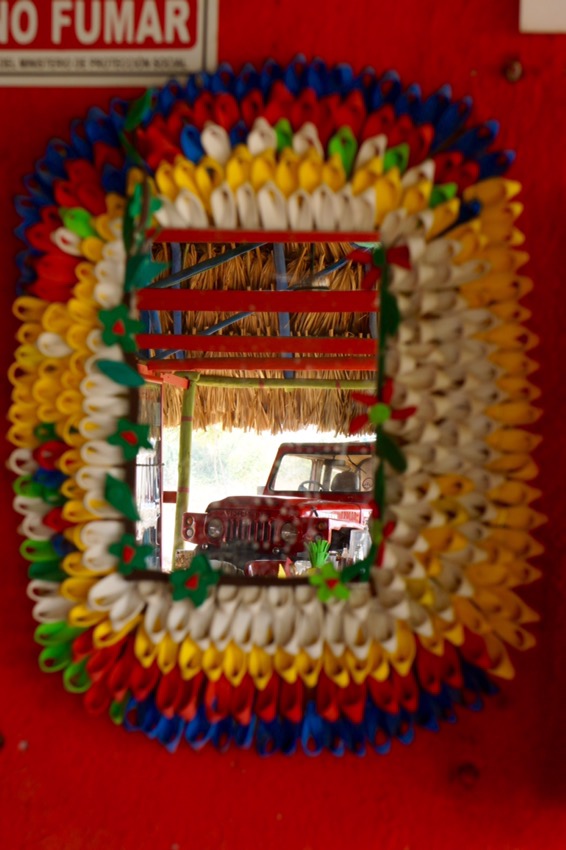 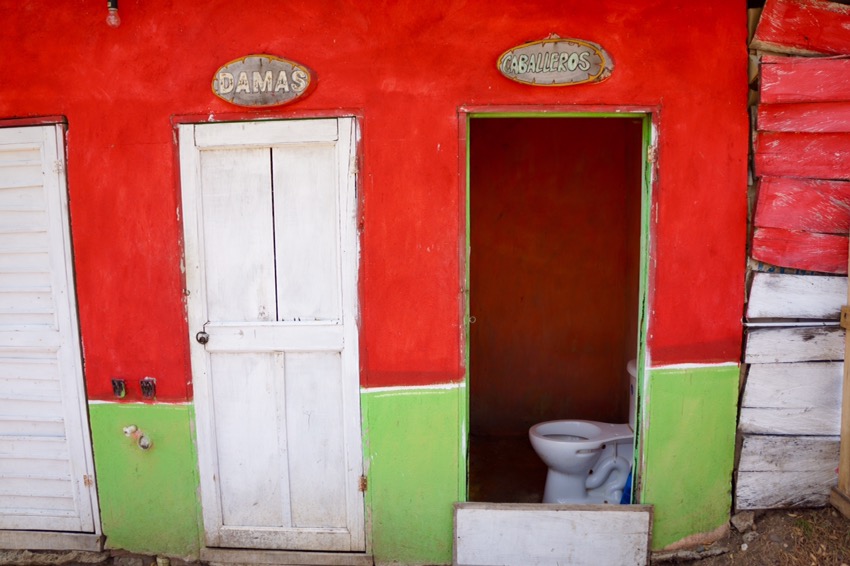
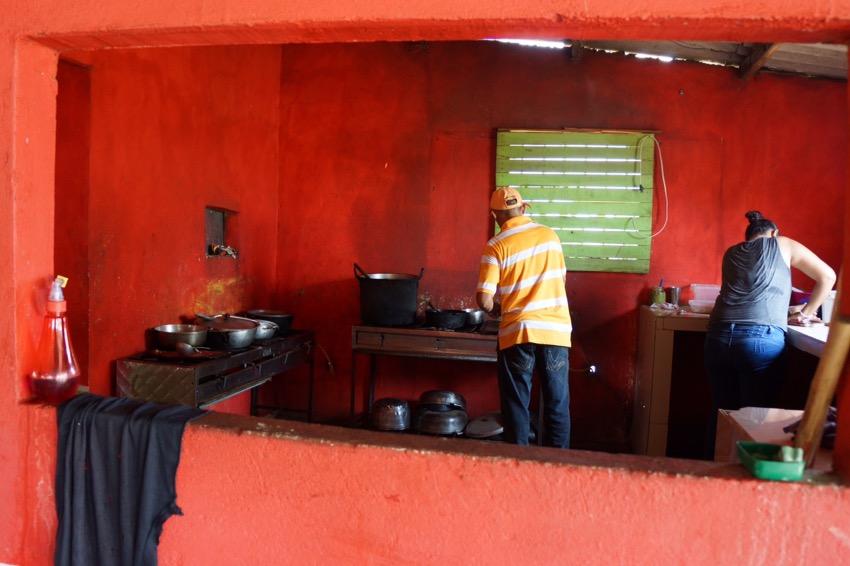 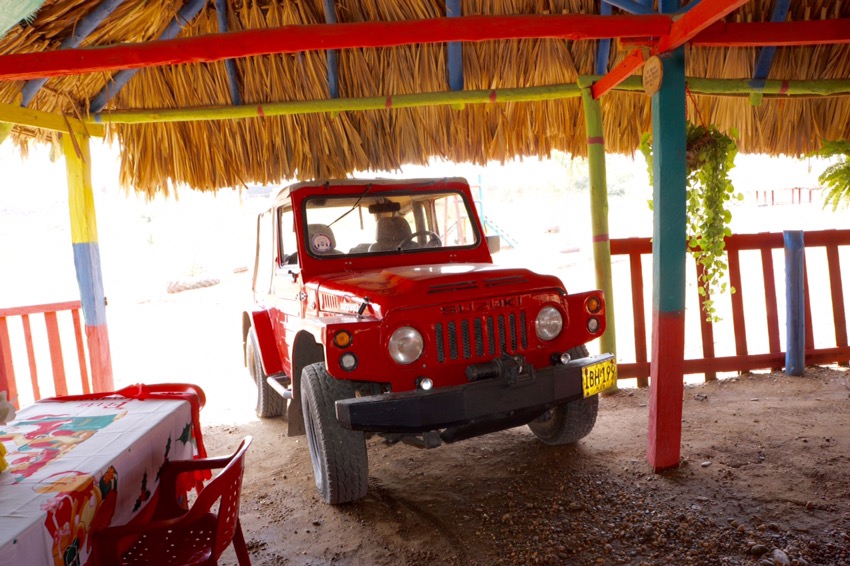
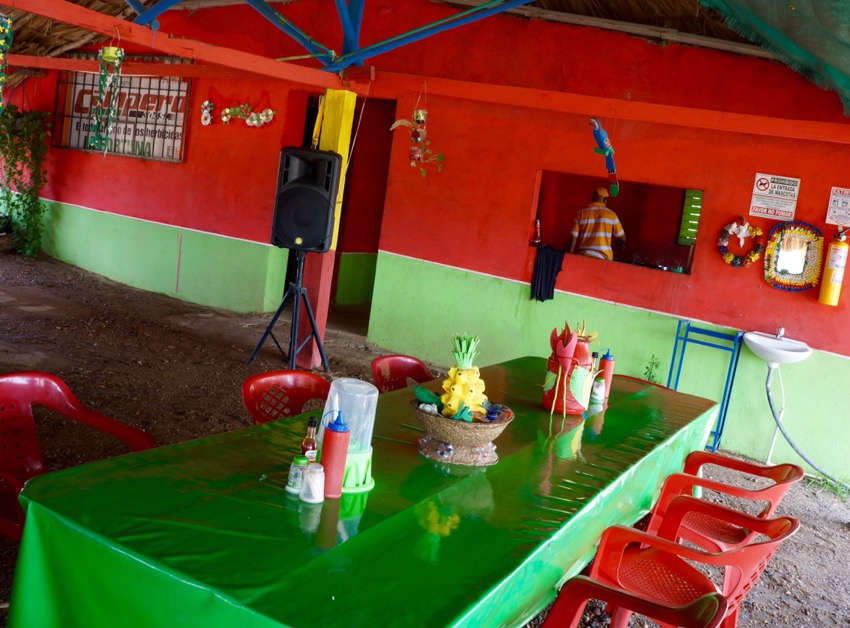 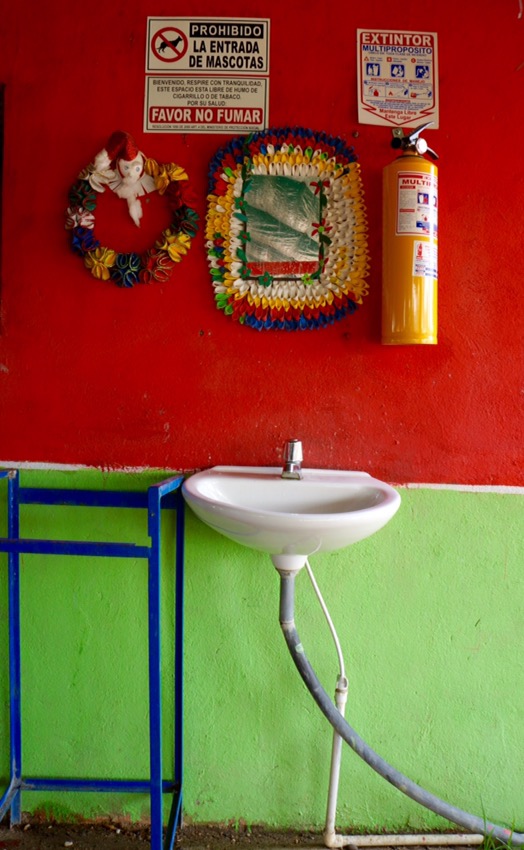
At Magangué, we were to have transferred to a public ferry for a two-hour crossing of the Magdalena River, which was the essential waterway for colonial trade, to Mompos. However to our pleasant surprise, the government has completed a bridge, which allows us to drive all the way.
Mompos is located within the confines of the Mompos Depression – a large area of wetlands – and is the largest freshwater island in South America. Founded in 1540, it was an important trade center, connecting the interior of the country wig Cartagena. Mompos is what Cartagena looked like, before it became a tourist destination. In 1810, Mompos was the first place to declare independence from Spain. In the mid-19th century, its population was decimated by a cholera epidemic.
Mompos is the place where the film of Garcia Marquez’s novel, Chronicle of a Death Foretold, was shot. More recently, the town is being reconstructed and will soon be discovered by tourists. Its isolation has kept this jewel of colonial architecture well preserved and the town has been declared a UNESCO World Heritage Site (in 1995).
Arriving late afternoon will gives us just enough time to get settled in La Casa Amarilla, and stroll around town as evening settles in. It’s hot! The others start their walk at five, but I delay half an hour and stroll around by myself, greeting and even talking to the friendly folks I encounter. Mompos has decidedly not been discovered by tourists. At this junction from coastal climate to Andean uplift, our humid delta environs enforce a relaxed and tranquil lifestyle, a welcome change from the Carnaval festivities of Barranquilla.
 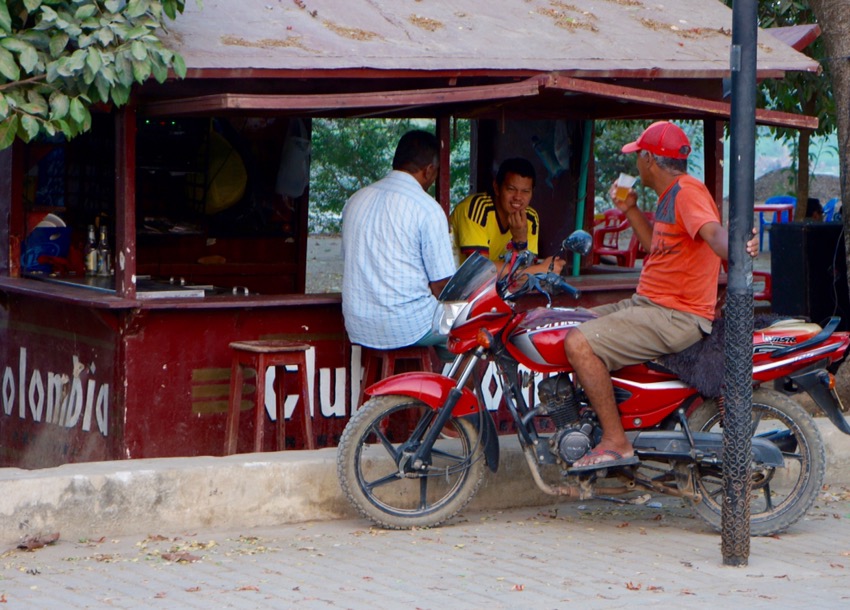
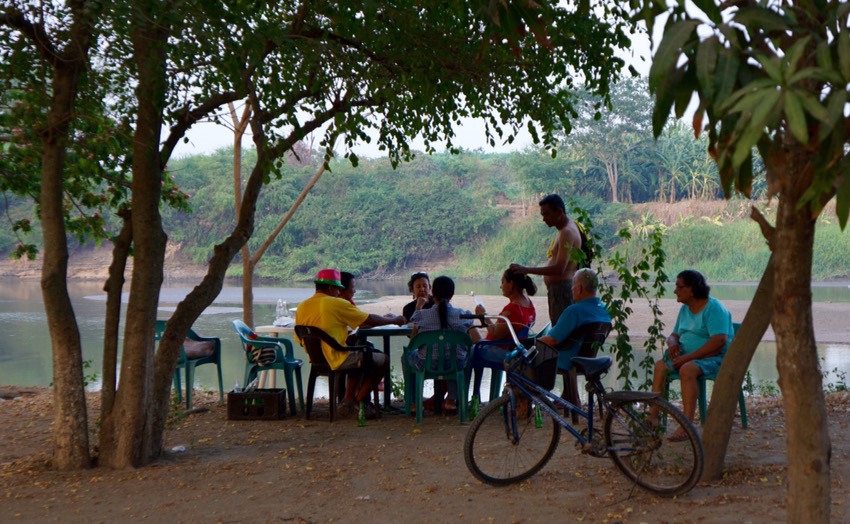 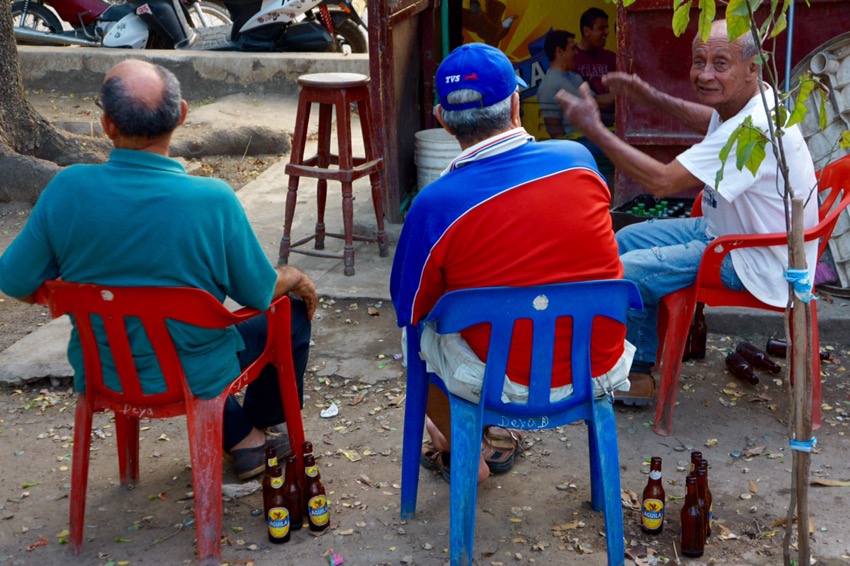
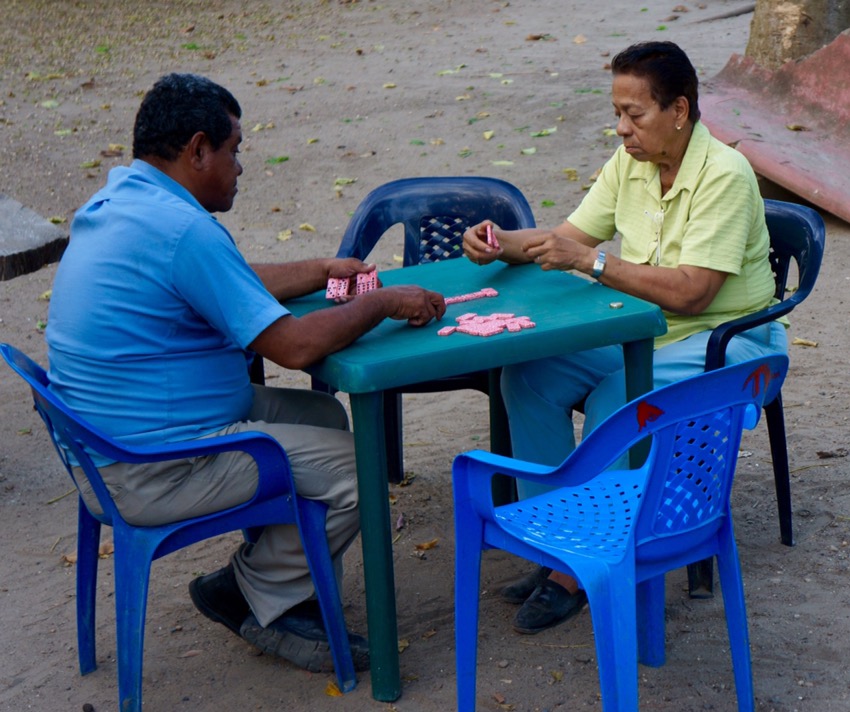 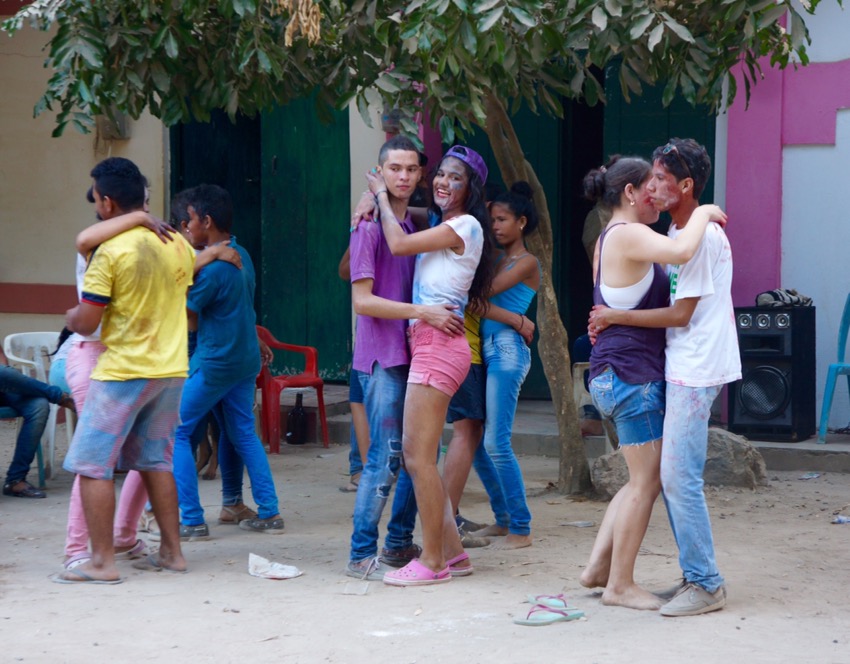
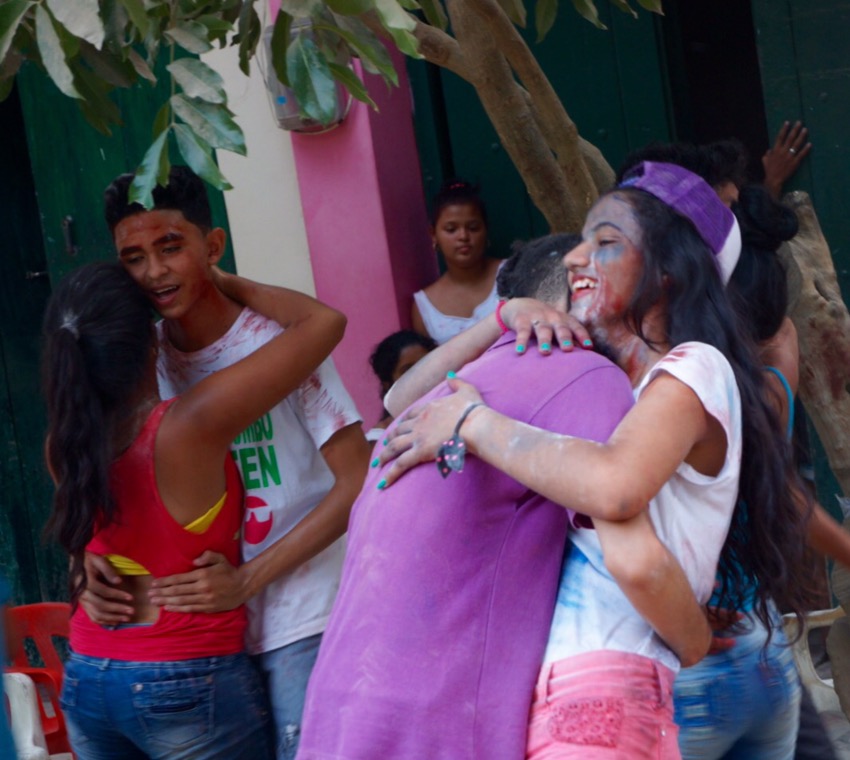 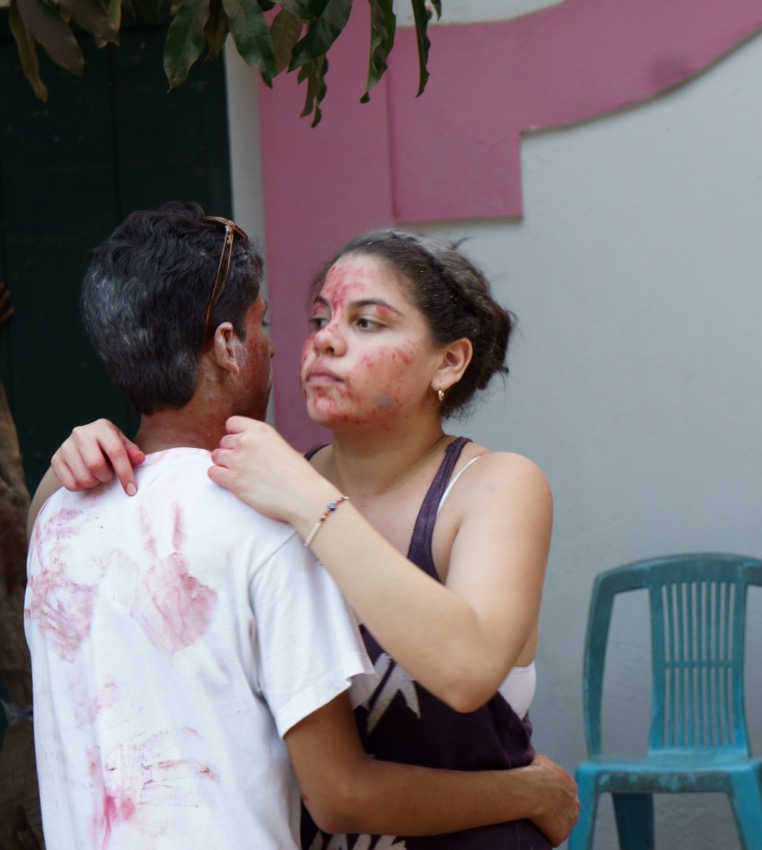
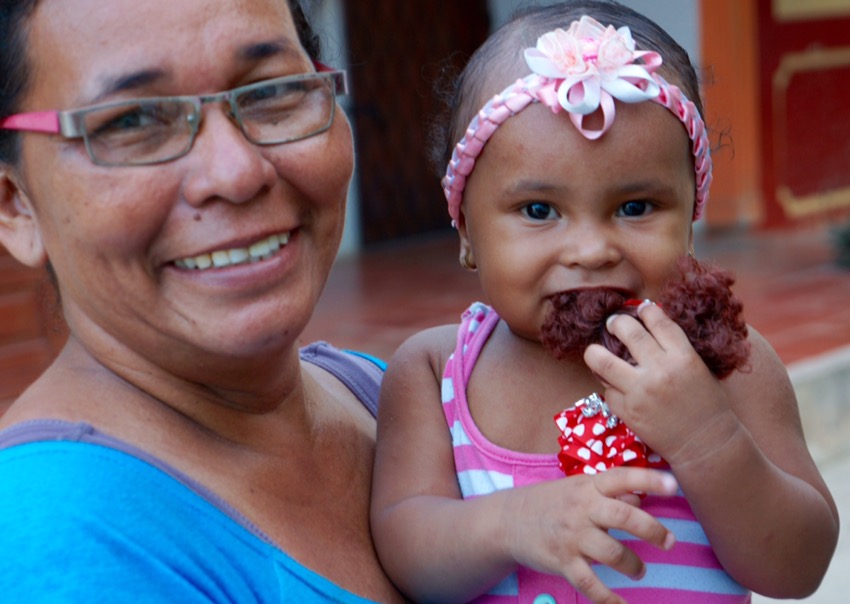 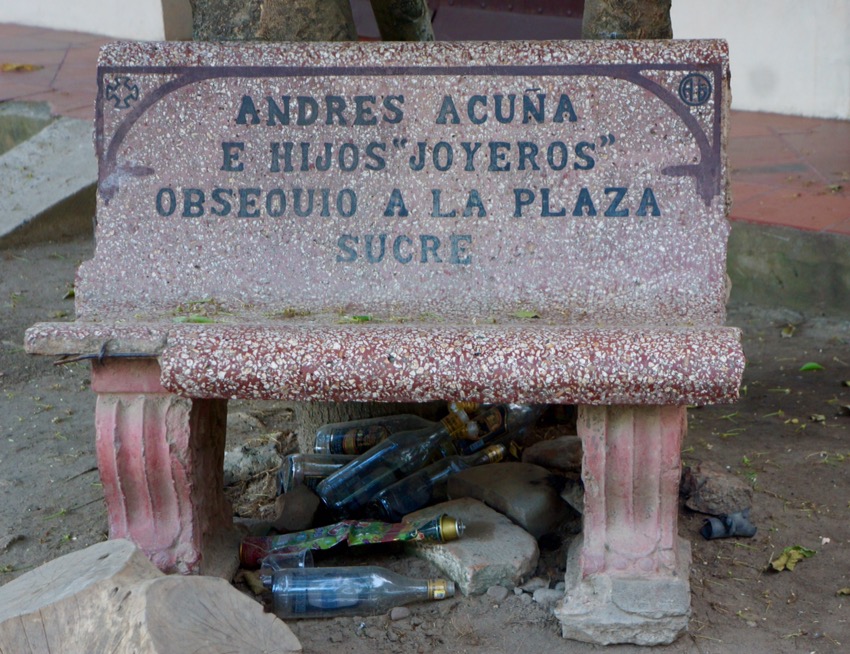
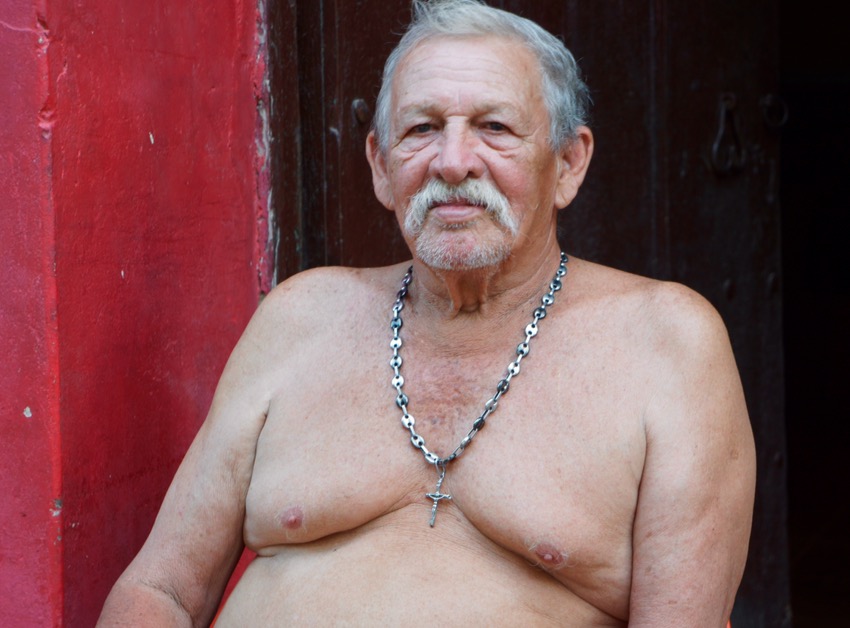
Had a very good dinner at a nearby restaurant called Fuerte San Anselmo, owned by an Austrian, Walter Marla Gürth, who sailed his own boat from Italy to Colombia about seven years ago. Delicious chocolate cake and orange-flavored dessert wine that he made
February 8
One of the most important tourist hubs in South America, Cartagena is a gem. Old world colonial façades mask modern boutique hotels and restaurants on the inside. Narrow streets with horse-drawn carriages prance past and the Caribbean evening light reflects ambers and lavenders overhead. Shopping, eating and walking throughout the center of this spectacularly walled fort are certain distractions.
We arise early and head out at 6AM to the local market to wade through the tight web of fish, meat, chicken, and fruit vendors and their local clients. It’s a market unlike others – gritty, real, grungy, friendly, fascinating, and utterly photogenic. Nevada says that it’s one of her favorite markets, and I could see why. There are no tourists (other than us).
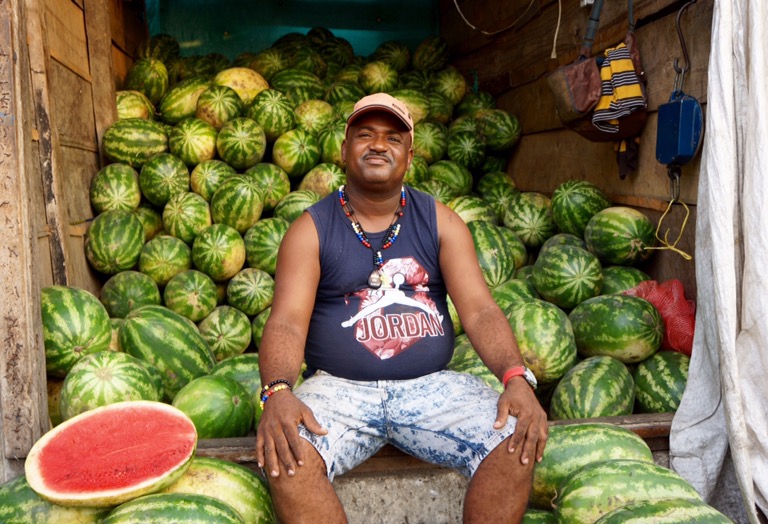 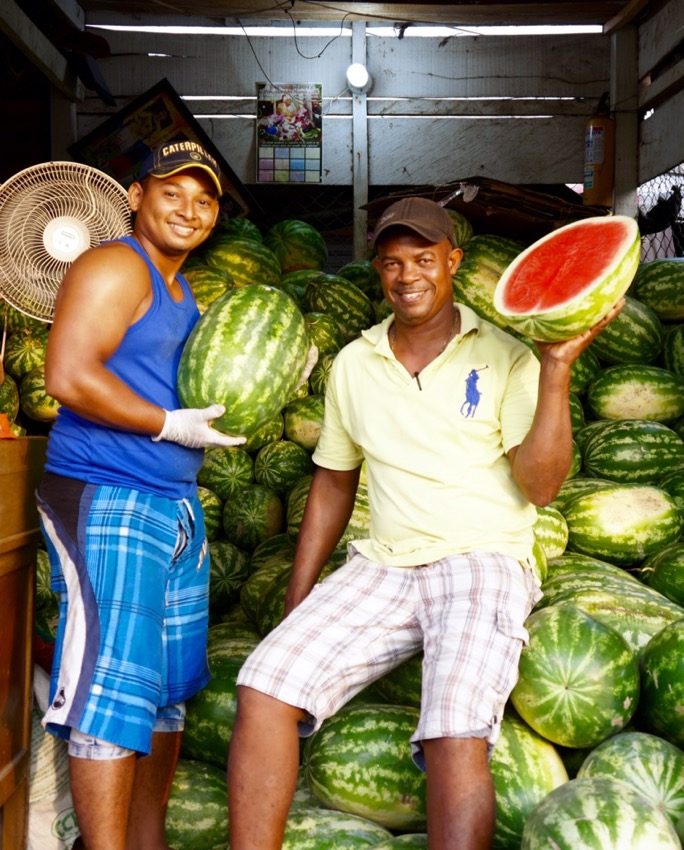
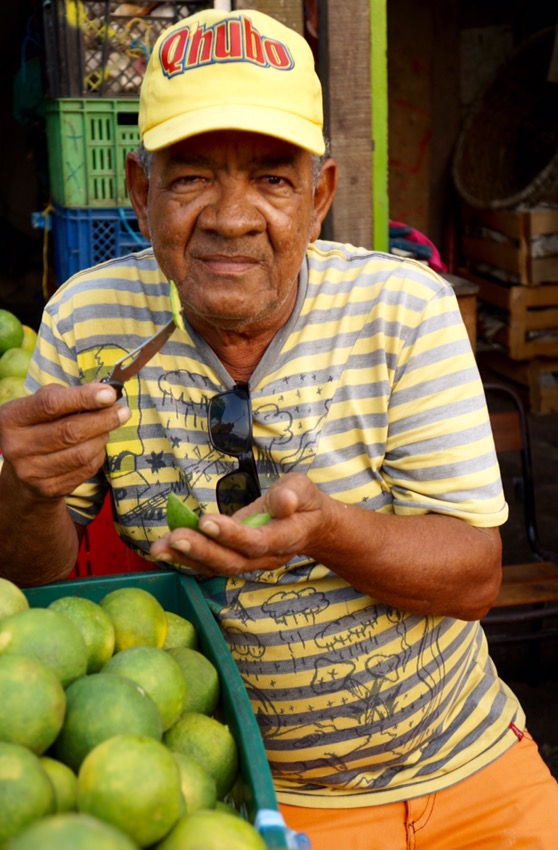 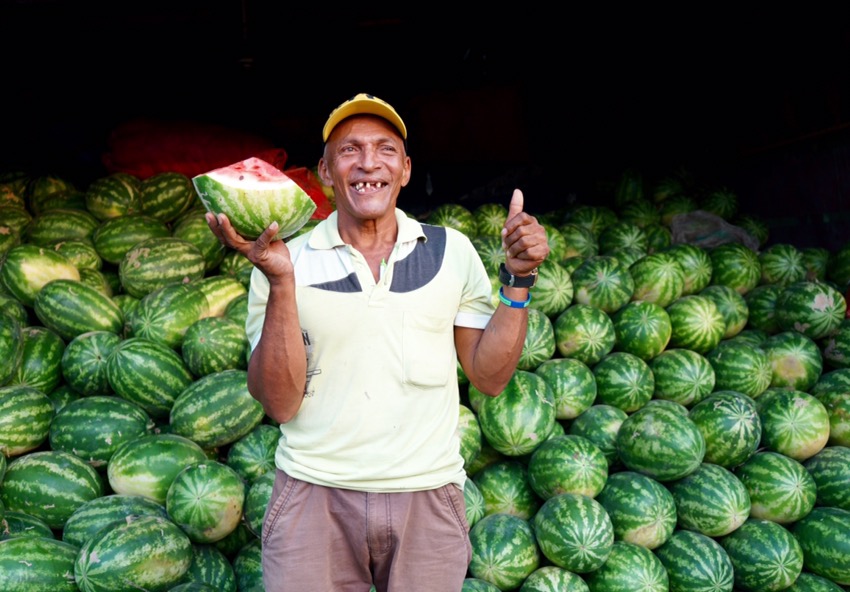
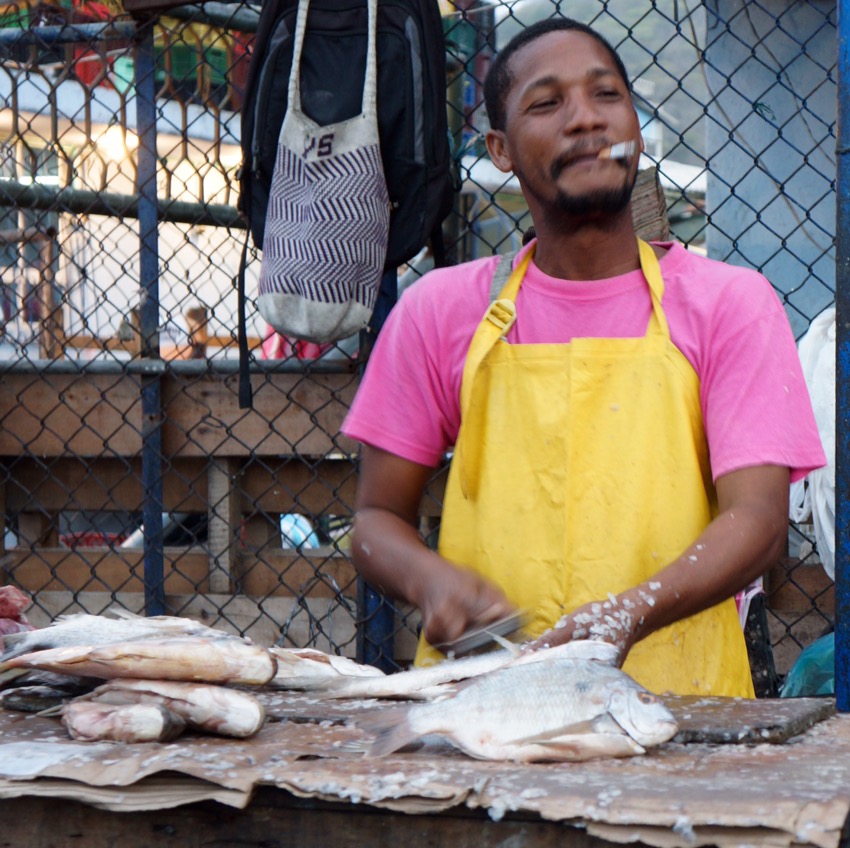 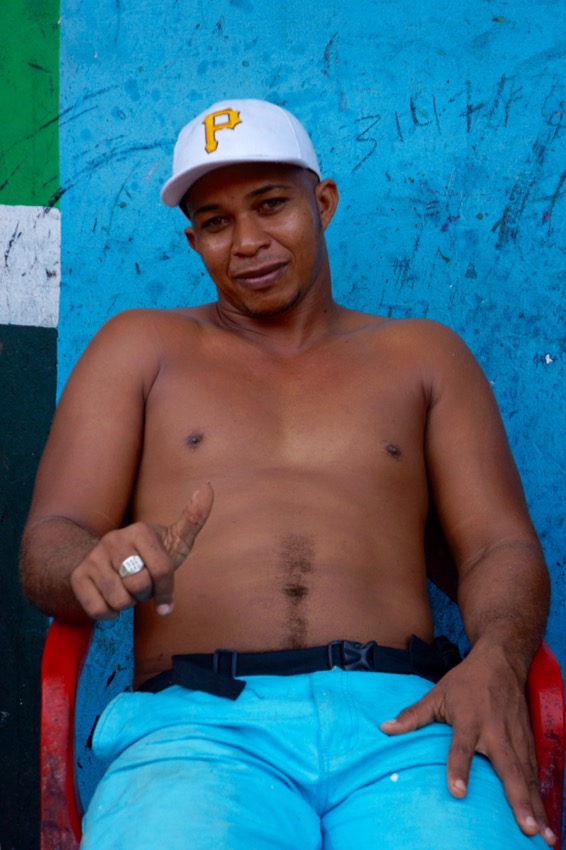
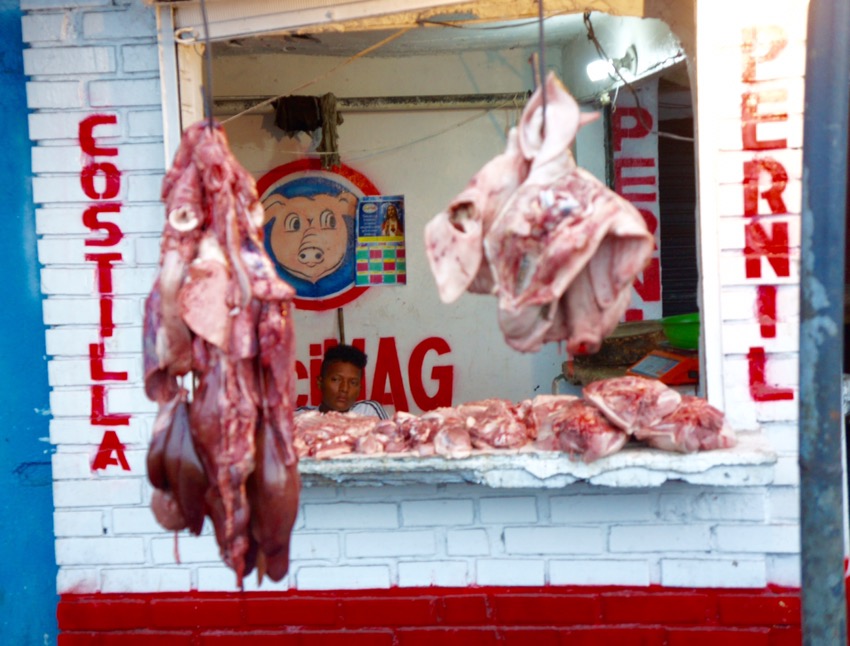
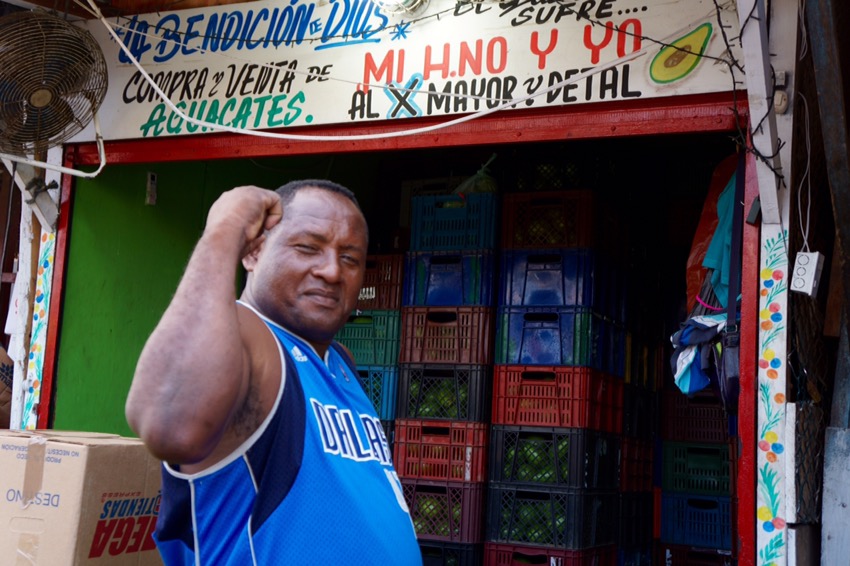
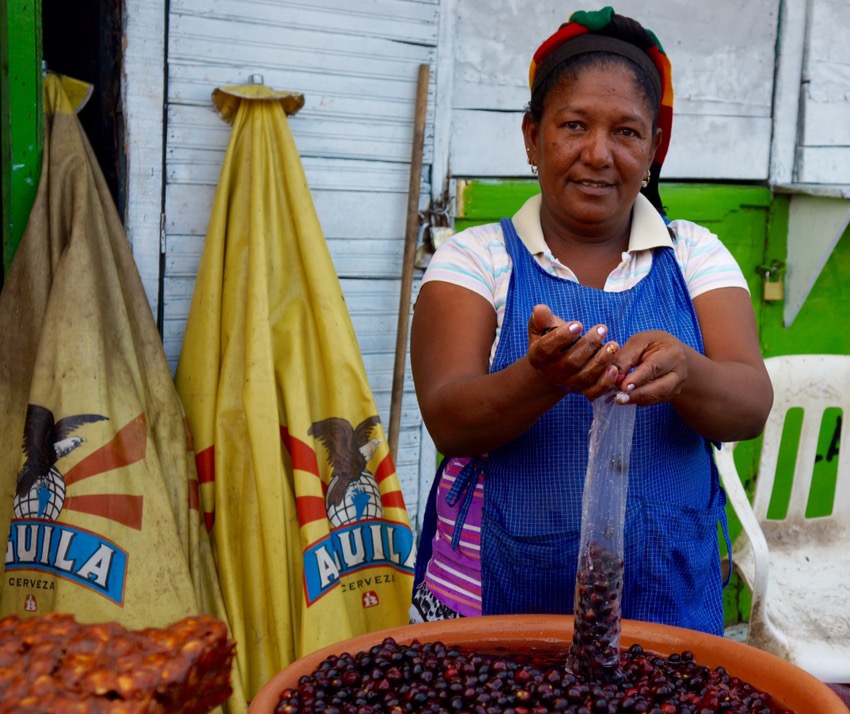 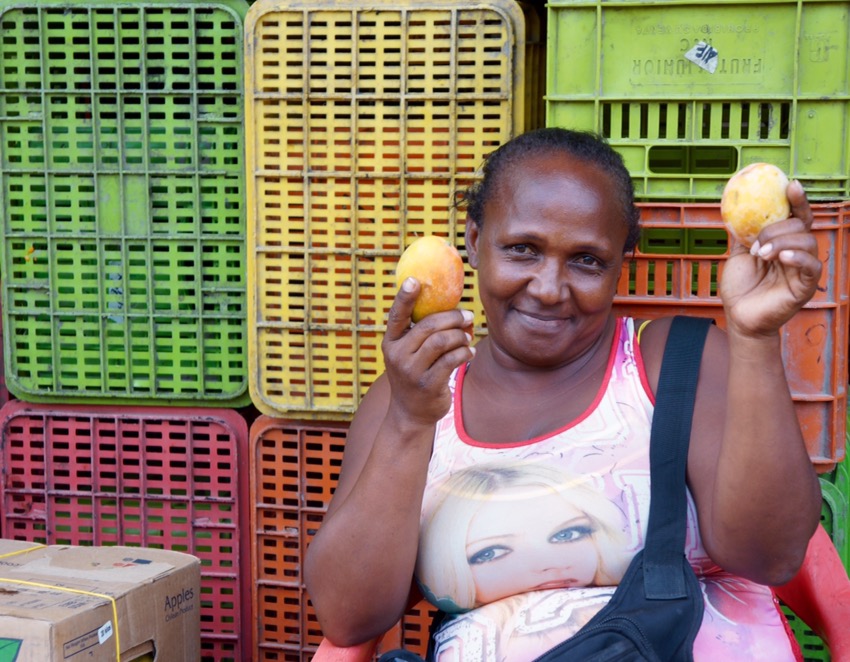
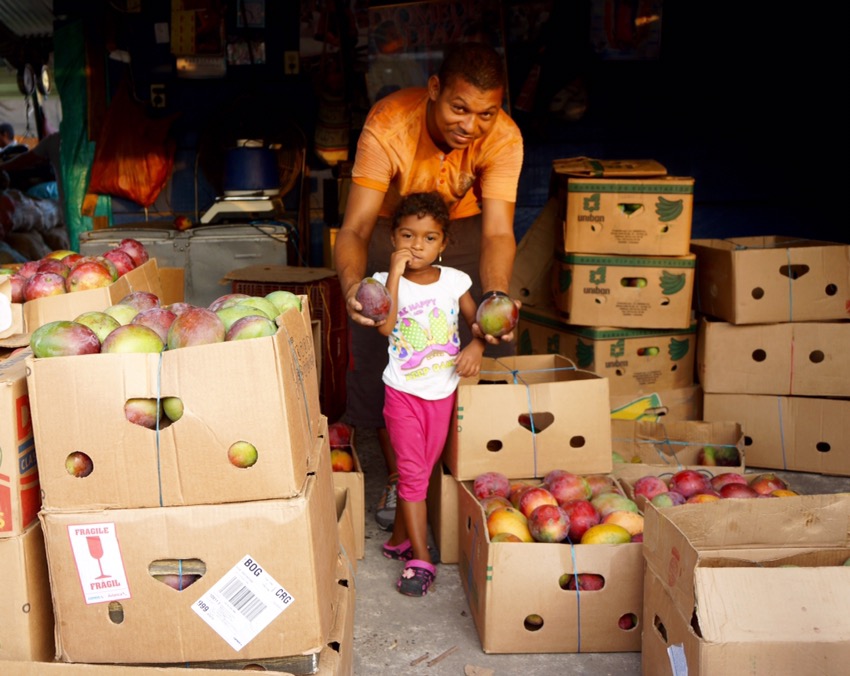 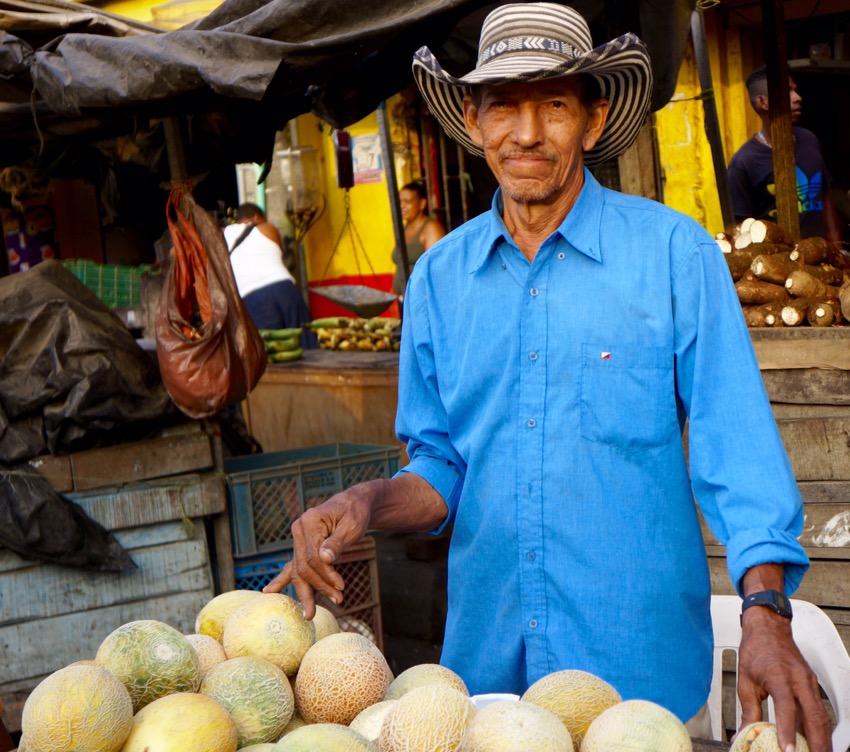
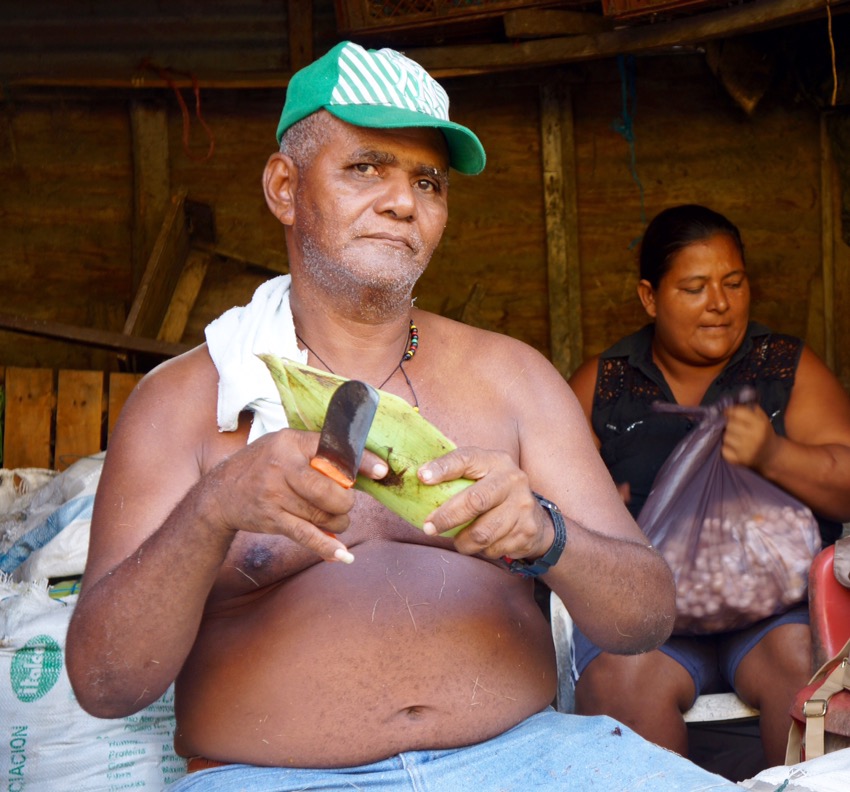 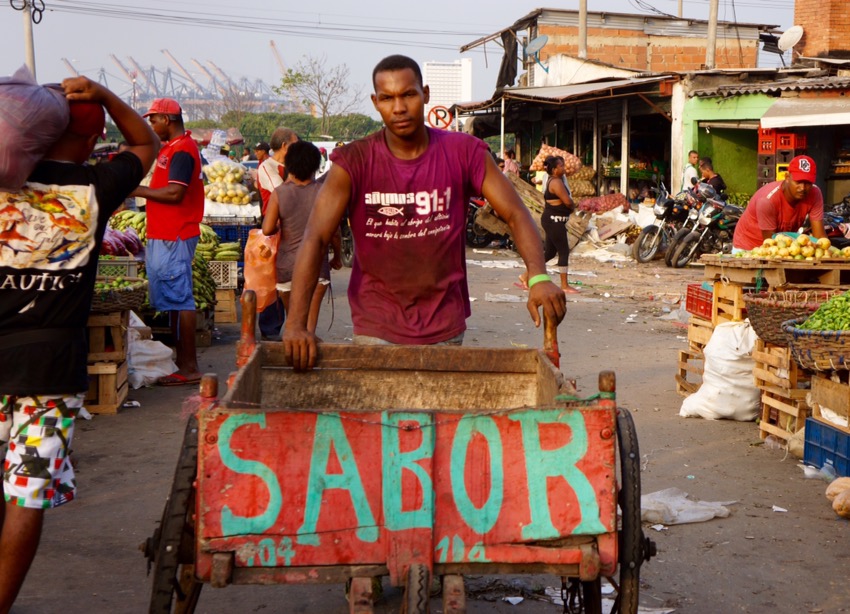
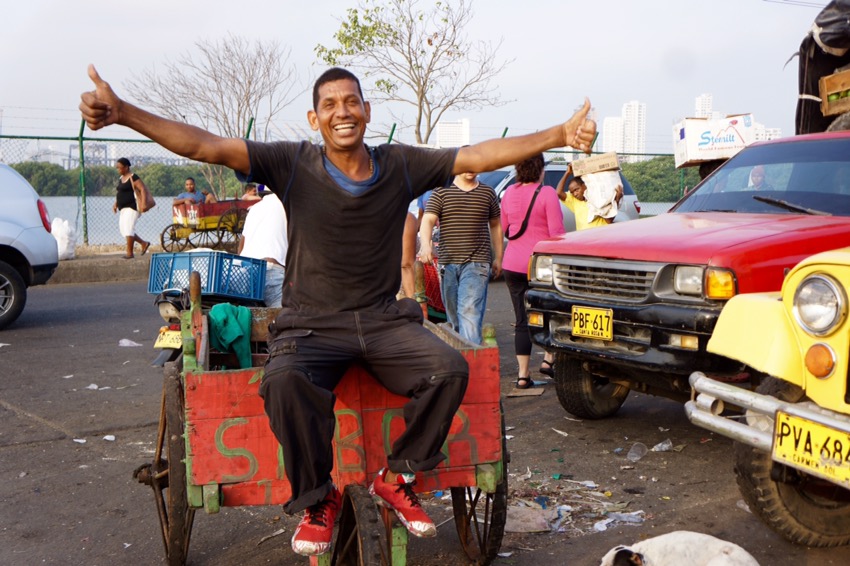 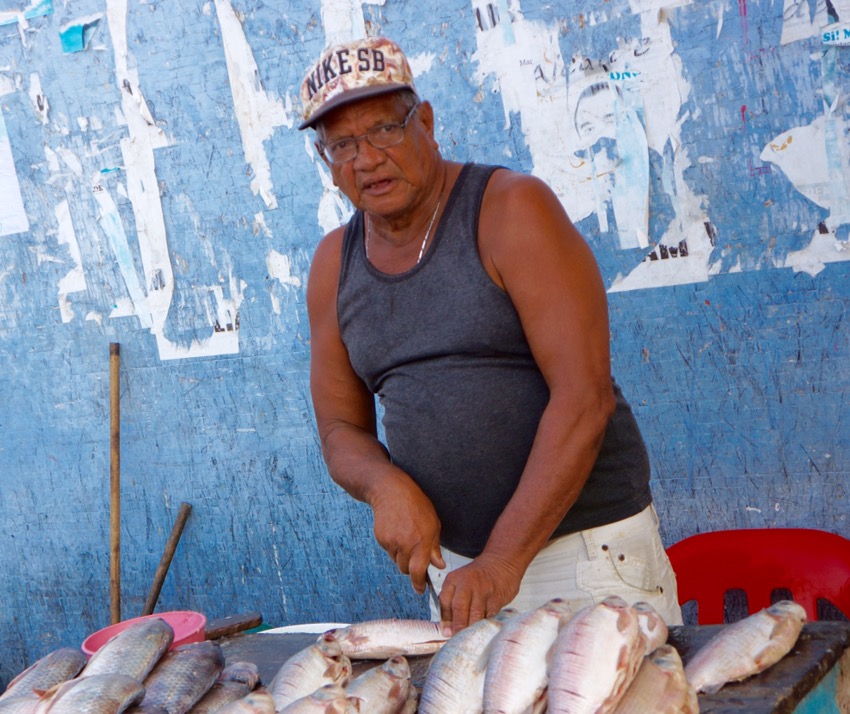
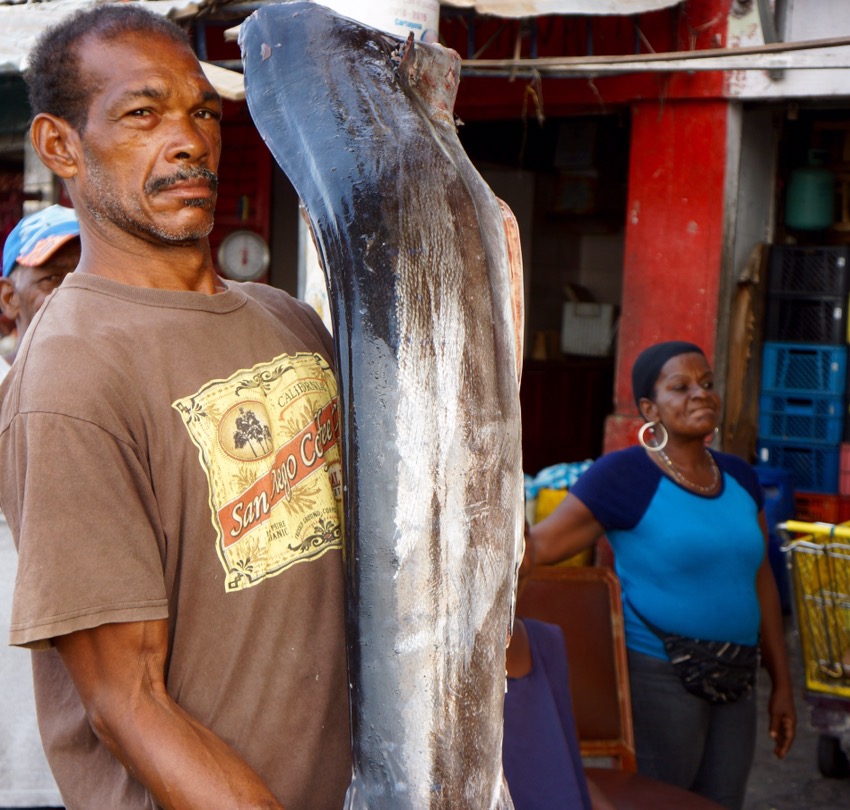 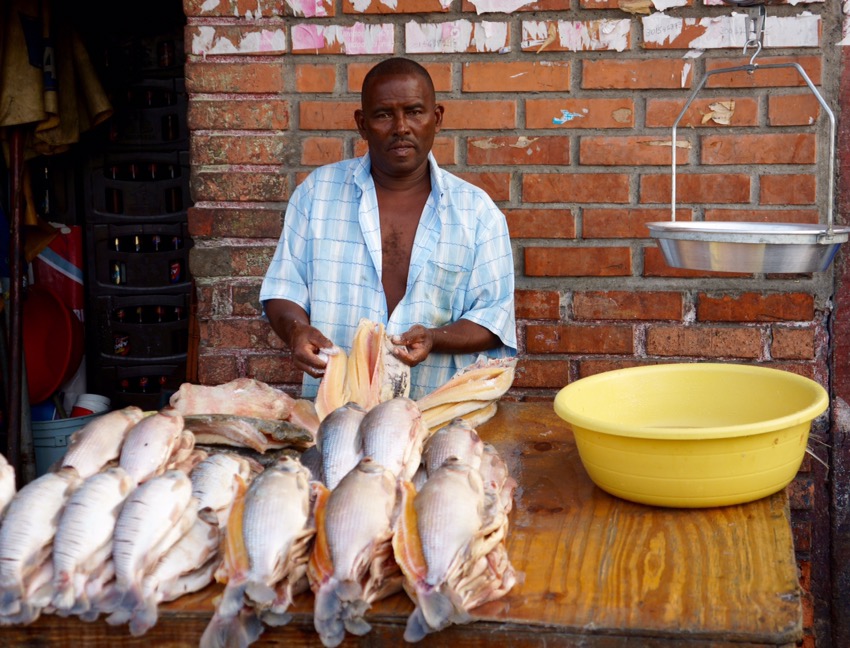
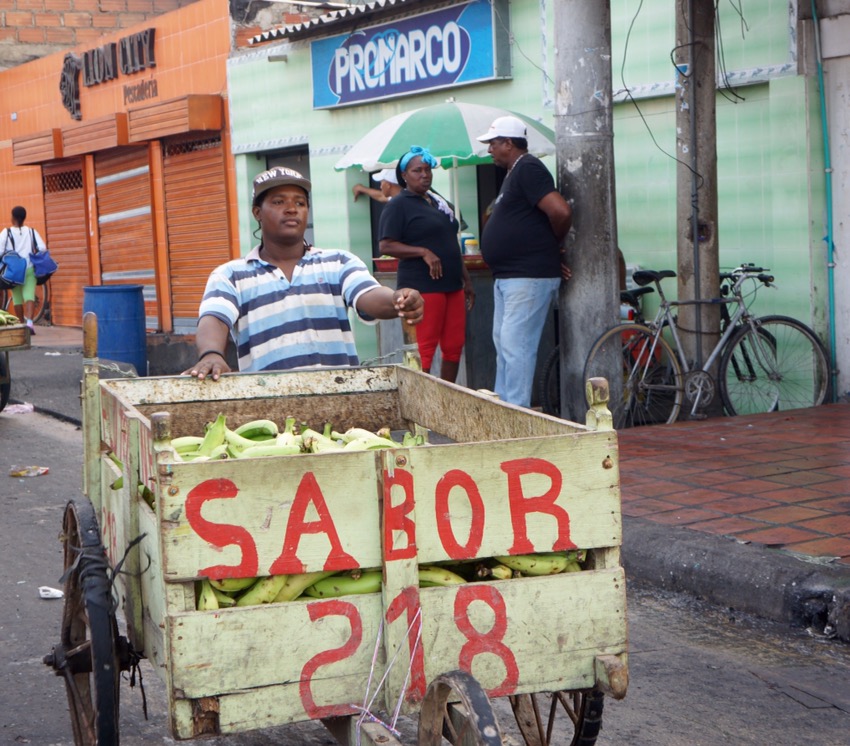 Post breakfast at the hotel, we have a private walking tour of the historical components of the city. Scheduled for 2 1/2 hours, I peel off when we get within a couple blocks of the hotel after an hour and a half. Though there’s a pleasant breeze, it’s quite hot, so I cut it short, even though the city is undeniably charming. There is a more touristy feel to Cartagena, and we see many other tourists Post breakfast at the hotel, we have a private walking tour of the historical components of the city. Scheduled for 2 1/2 hours, I peel off when we get within a couple blocks of the hotel after an hour and a half. Though there’s a pleasant breeze, it’s quite hot, so I cut it short, even though the city is undeniably charming. There is a more touristy feel to Cartagena, and we see many other tourists
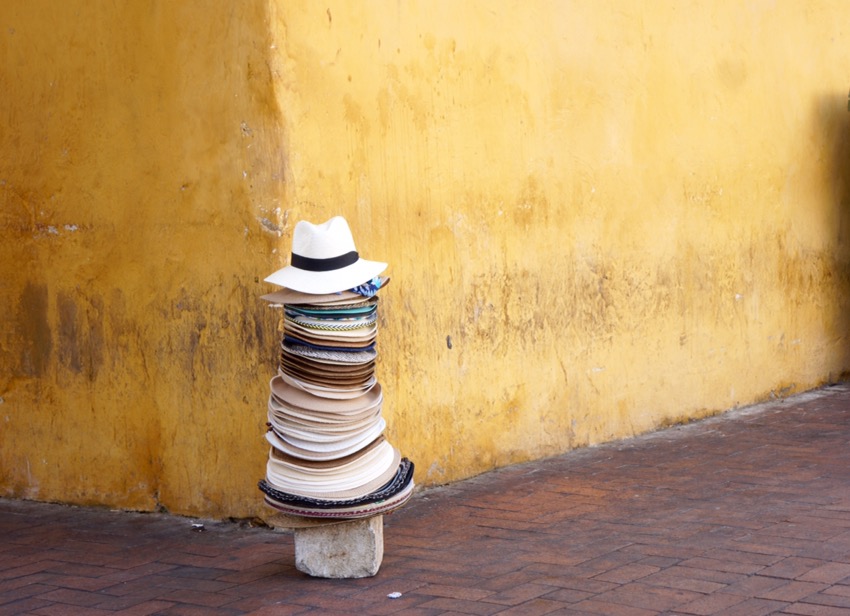 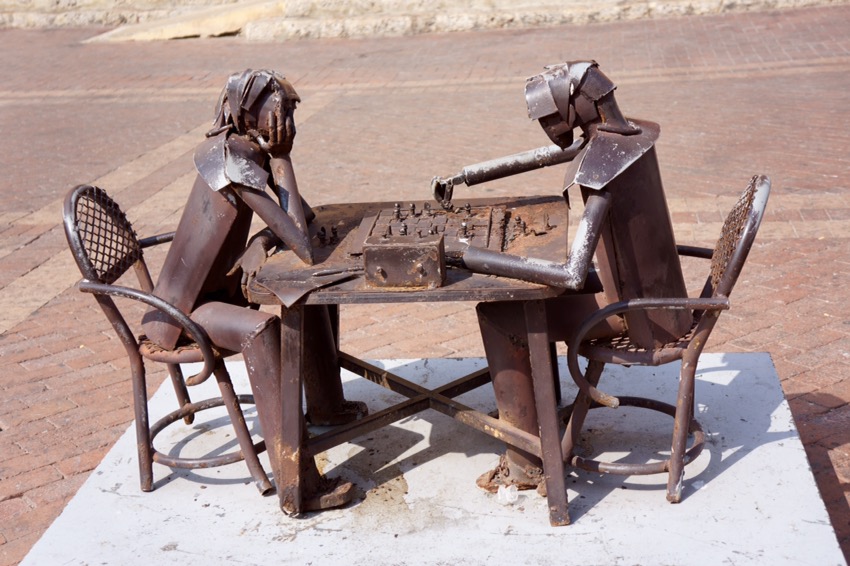  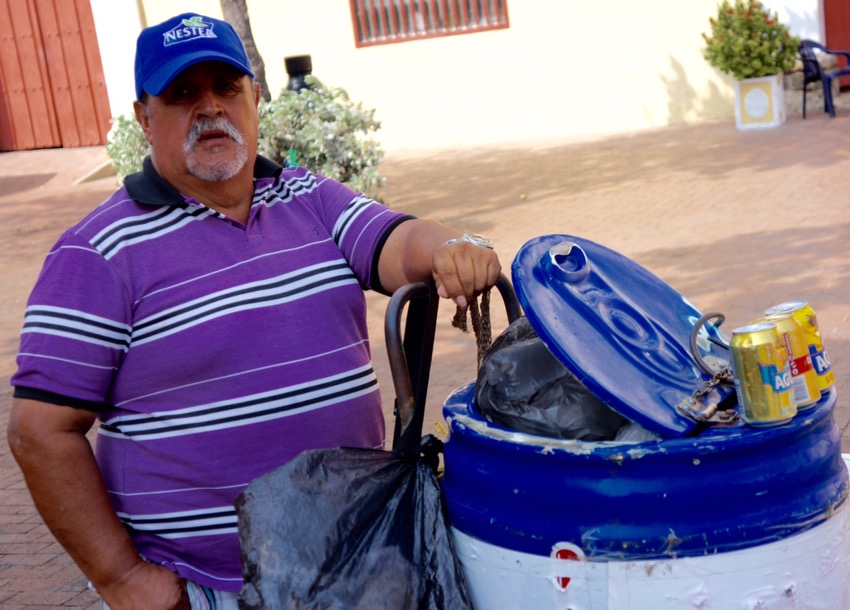
In the afternoon, we wander through the evolving Getsemeni residential district. The weather is very hot, but a steady, delightful breeze makes it bearable.This tucked-away neighborhood, ten minutes’ walk from the center, gets us a little closer to every-day reality for the locals. I spent at least half an hour with a young Jamaican man named Osho at a gallery in which his uncle’s naive, self-taught art was displayed as was clothing painted by Osho. He was a delightful fellow, who had lived several places in the US, traveled extensively in Colombia and Venezuela and was a musician, as well as an artist. We exchanged emails and may well stay in touch.
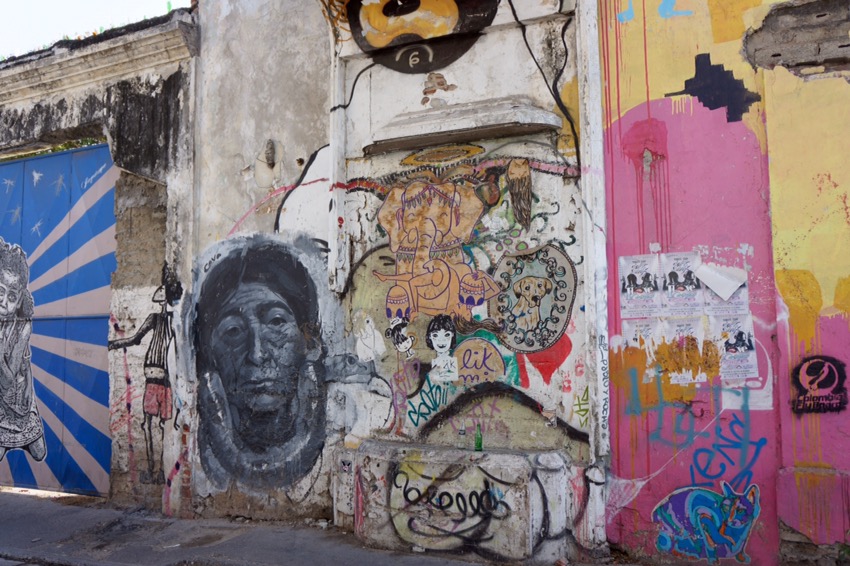 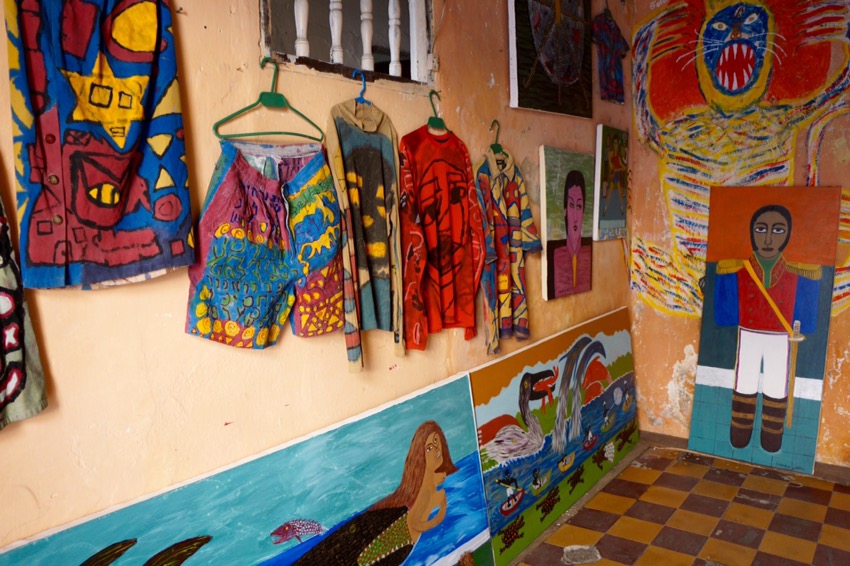
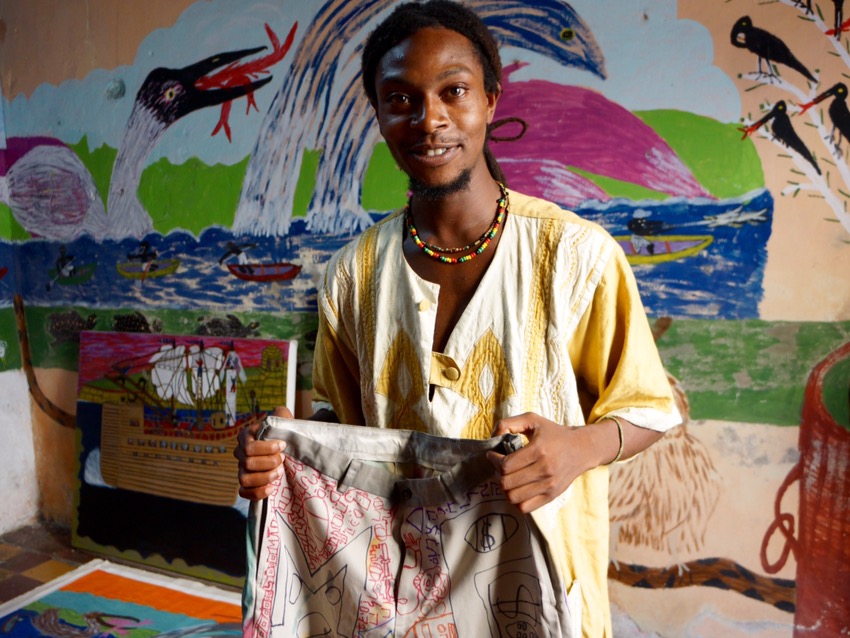 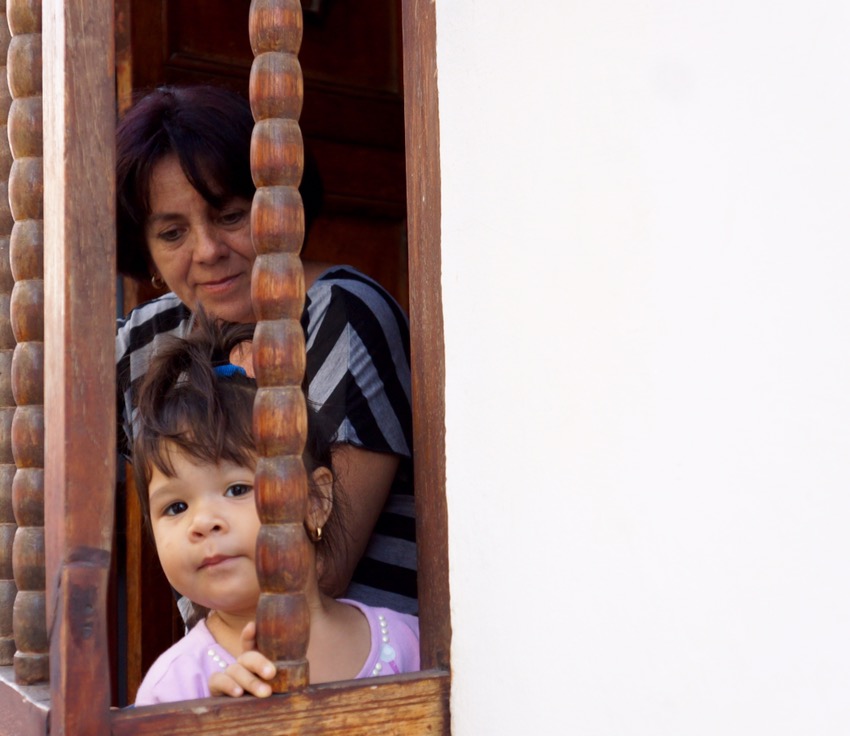
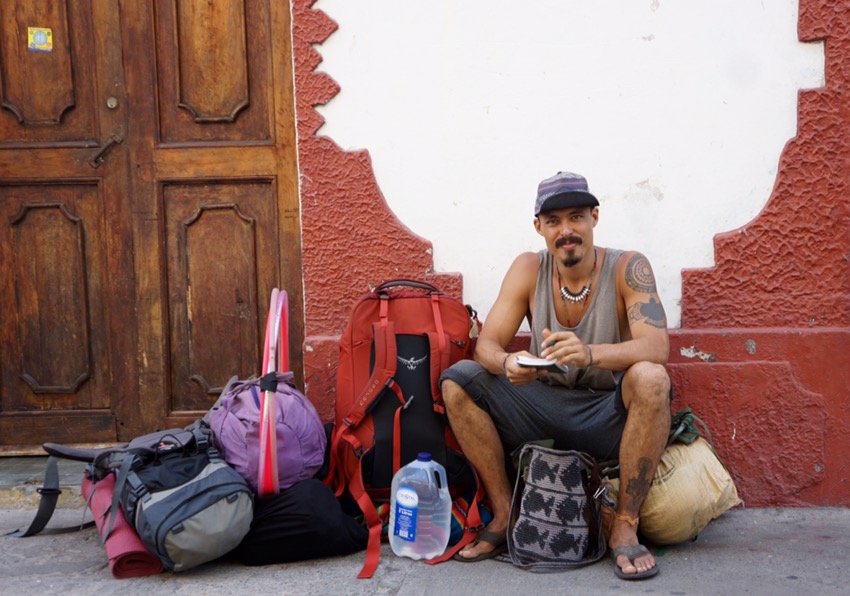 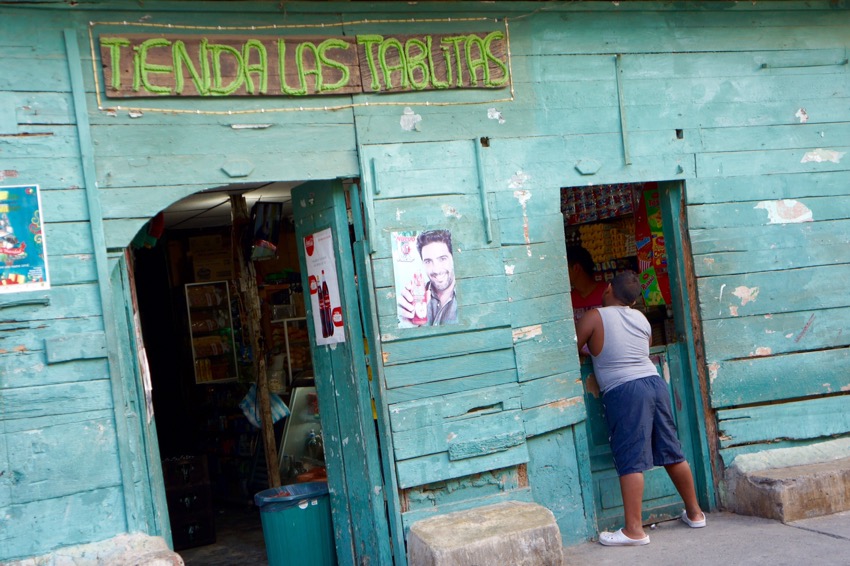
 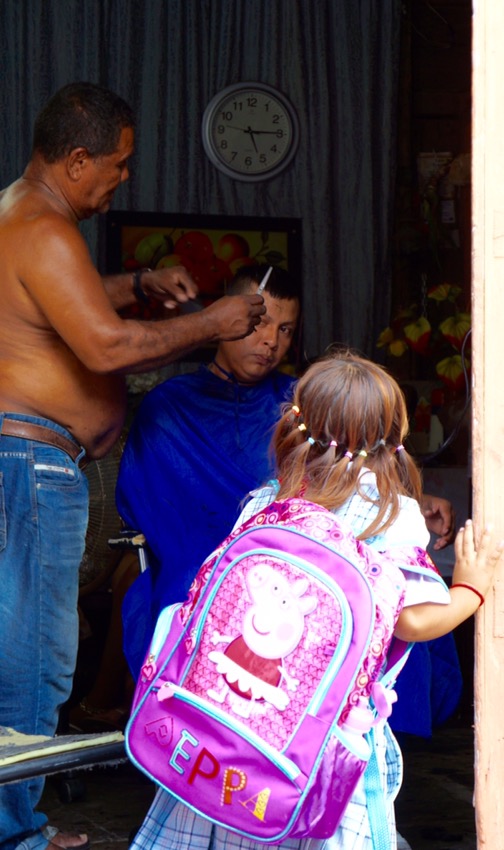
 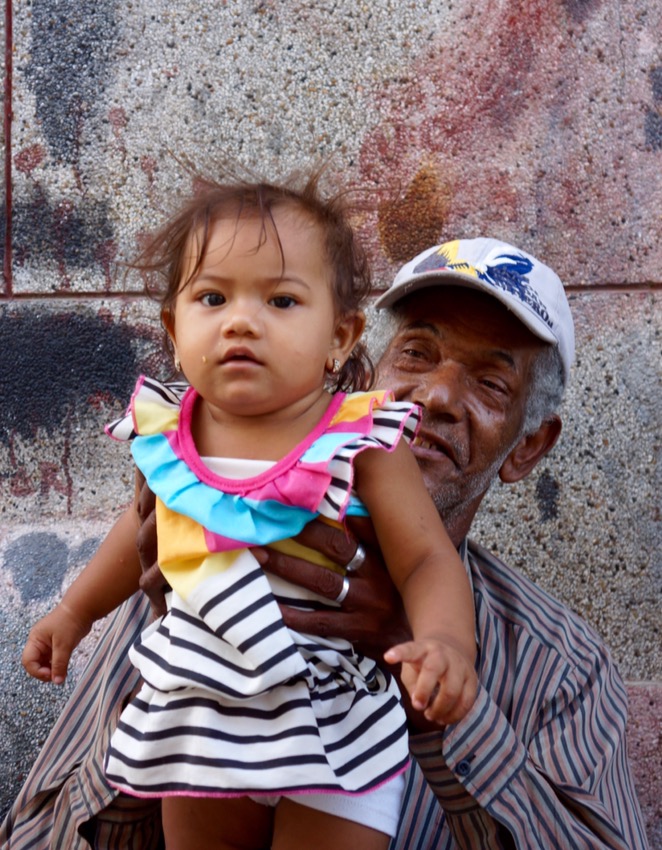
 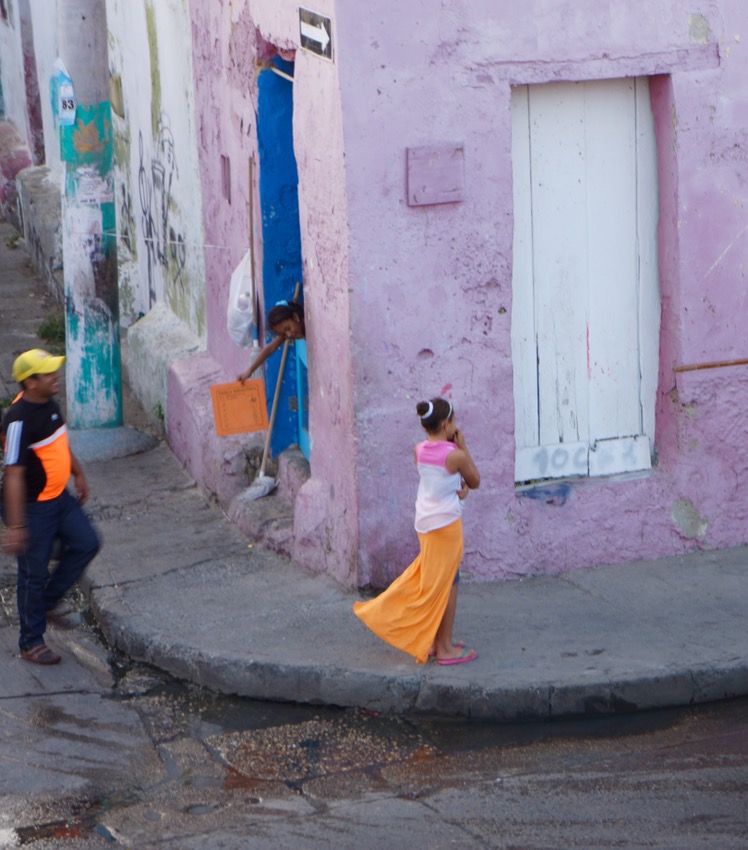

We walk back to the hotel along the old city wall by the Carribean. After a bit of a rest, we head around the corner from our hotel for an excellent dinner at Restaurant Don Juan.
February 7
We breakfast at the hotel, then, at about 10AM, head out into barrios (neighborhoods) to seek out the true spirit of Colombia in the barrios streets. We visit two neighborhoods and the group disperses in many direction to meet and photograph the locals, who could not be friendlier.
I have another opportunity to practice my modest Spanish, which is great fun for me. Some locals have equally modest English, which they enjoy showing off, too. There is something of a festive feeling, with some music playing and people preparing for afternoon festivities in front of their brightly painted homes.
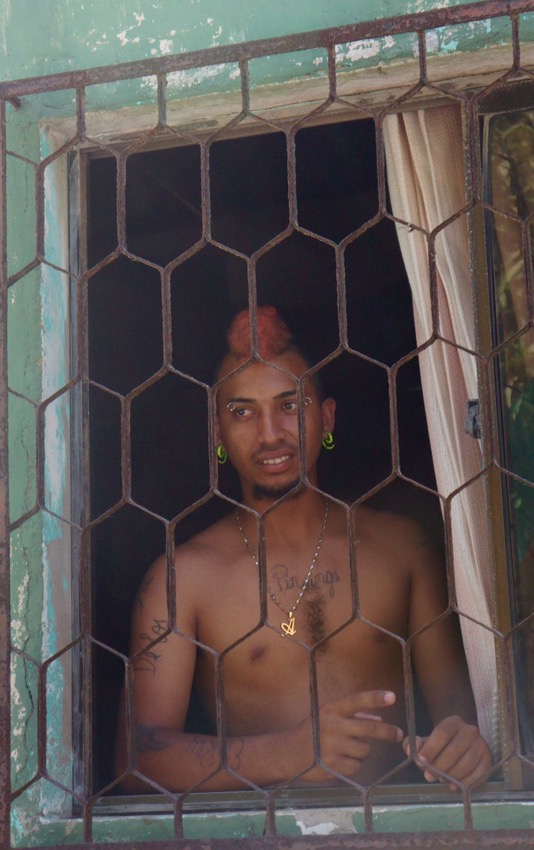 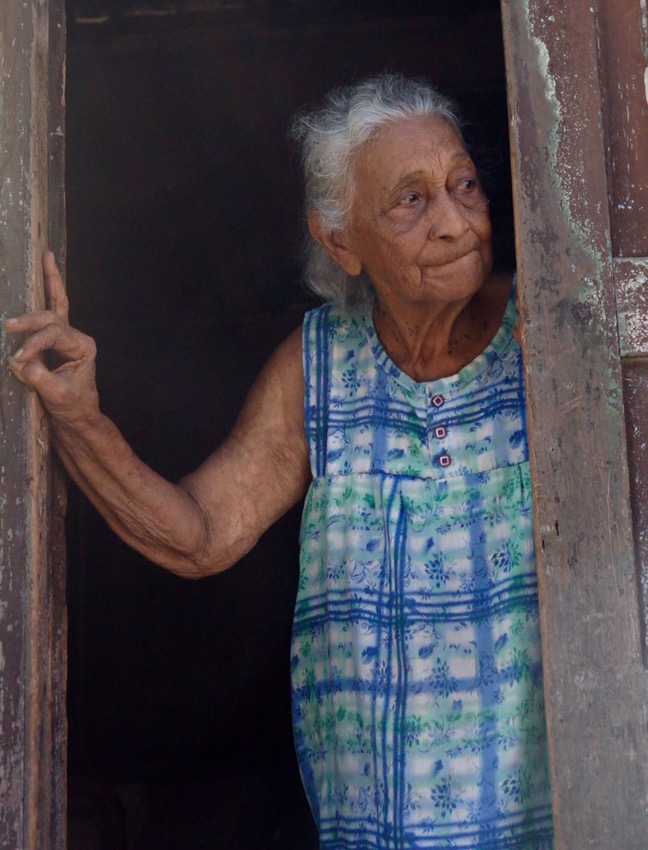
 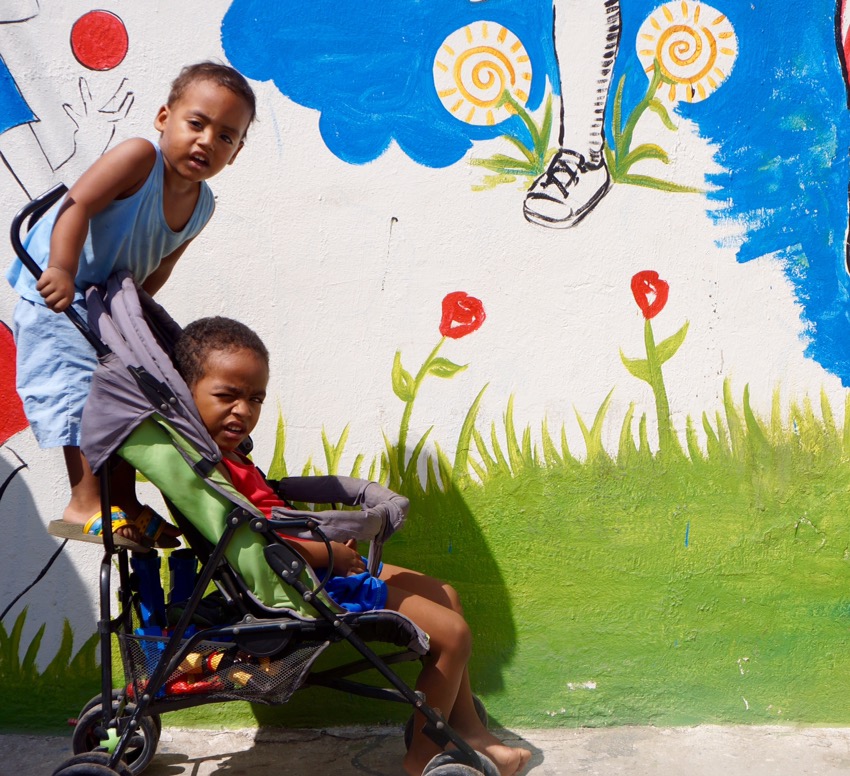
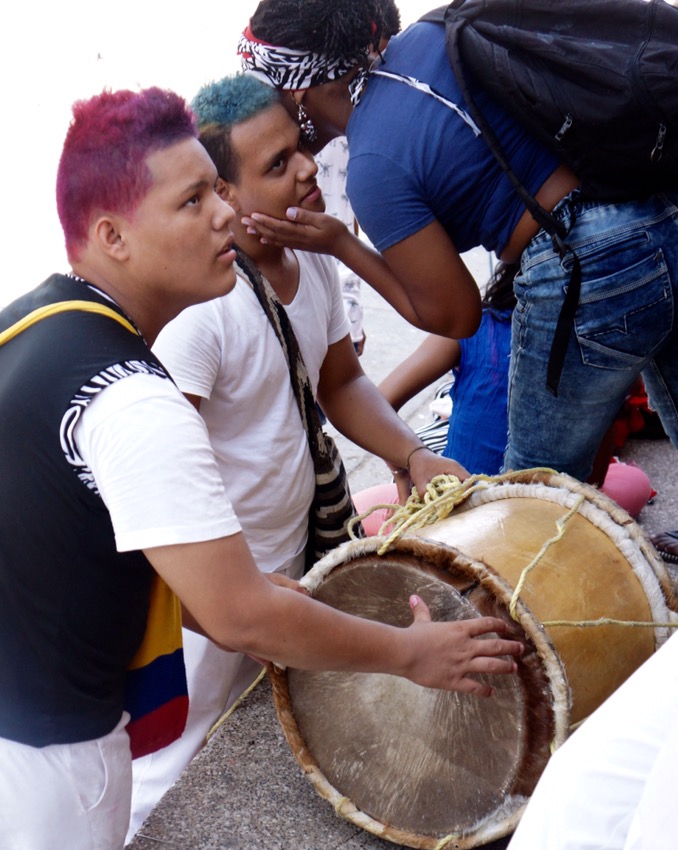 
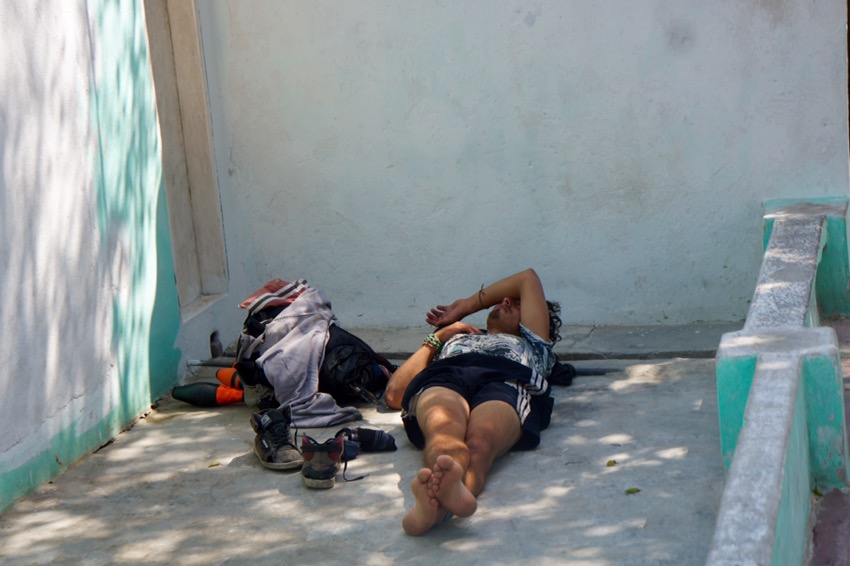 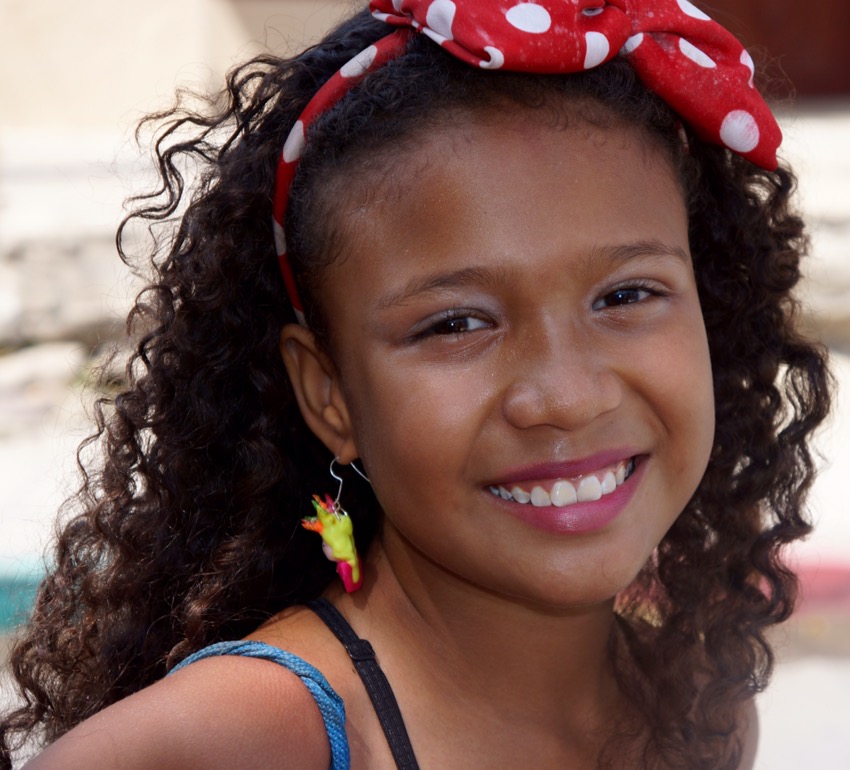
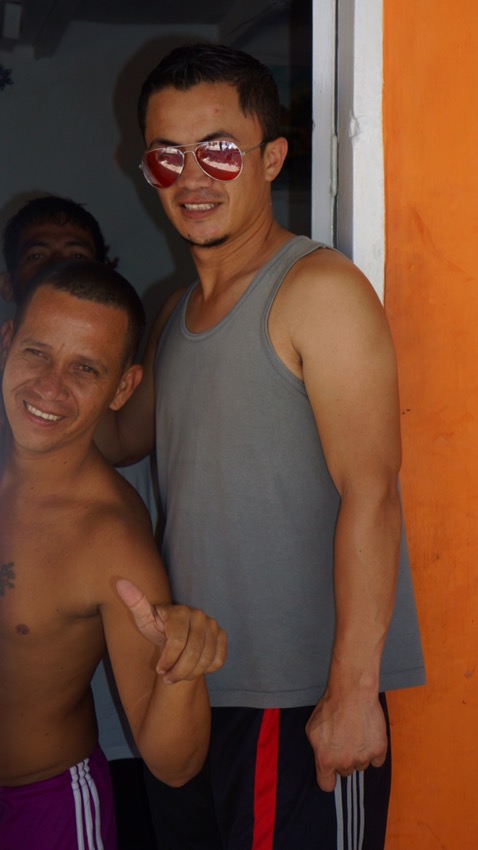 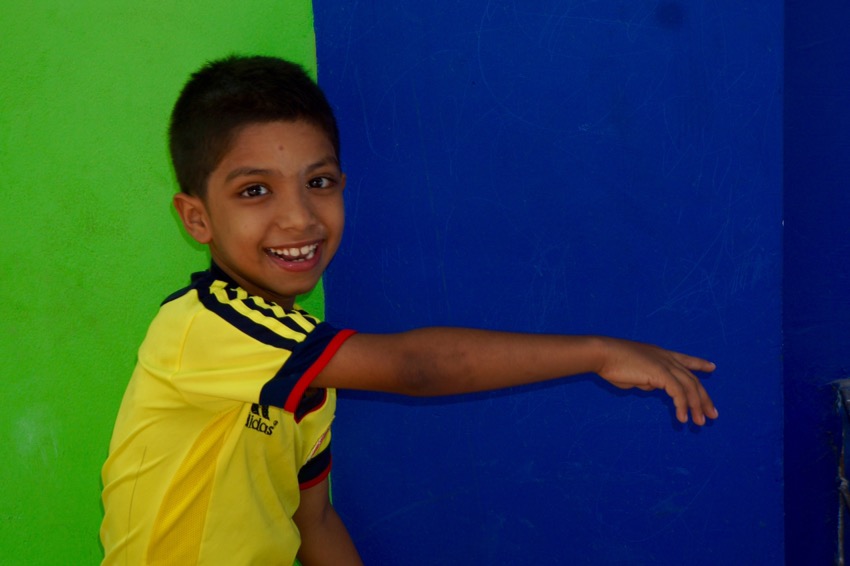
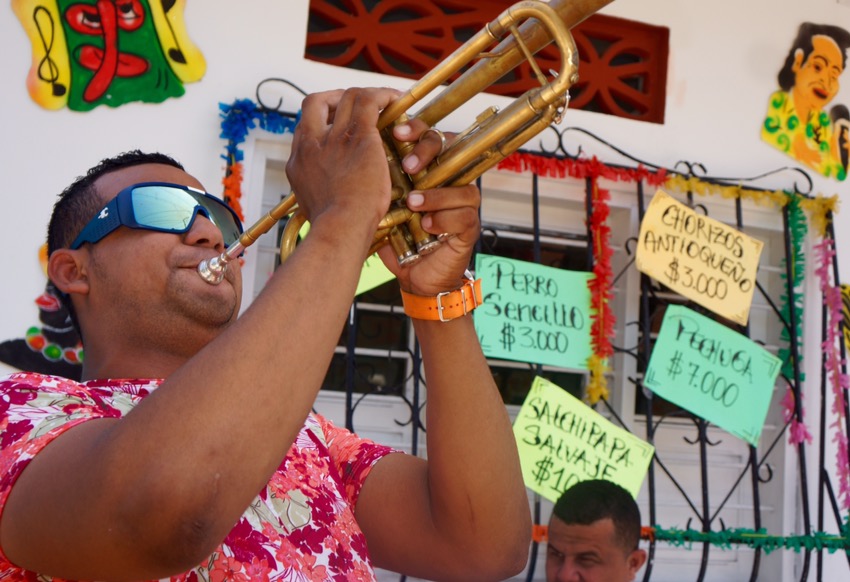 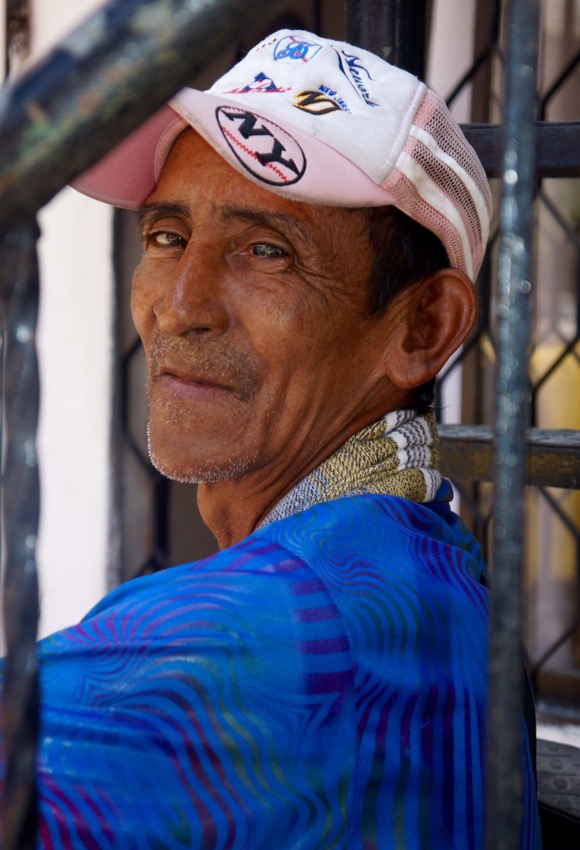
 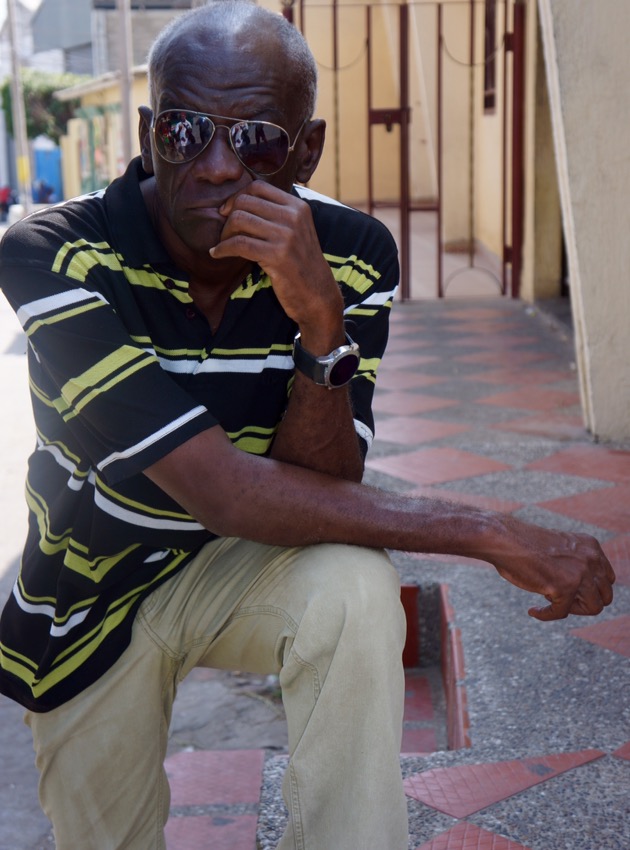
 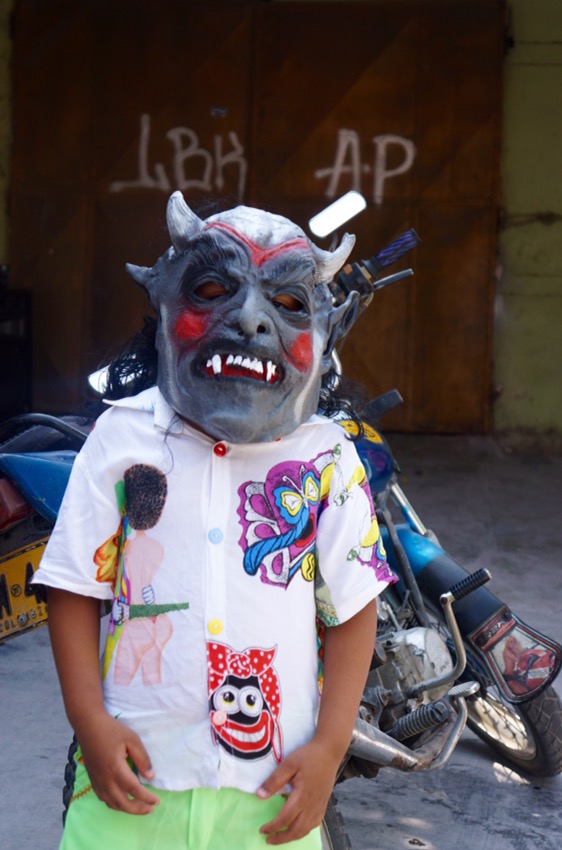
We stop for lunch at a place right near where the parade will be, then we continue photographing the Carnaval for the more accessible day: La Gran Parada (The Great Parade) of the locals neighborhoods. This day is less commercialized and features a variety of different dance troupes from all over Barranquilla. It is a whirlwind of color, movement and emotion, hypnotic music and rambunctious revelers joining the fray, shouting, clapping, singing, drinking and spraying foam on one another.
Unlike the last time Nevada was there, barricades separate the crowd from the parade; but not us. We talk our way past the barricades and are admitted to walk along with and photograph the parade. This is a clear example of white privilege, but we claim it. This privilege is likely to disappear or diminish as Carnaval becomes even more popular, and attracts others who look like us. So, we are fortunate to be able to experience it now.
February 6
Modest breakfast at hotel, then Nevada, Cynthia and I go shopping at the local market that I had skipped to nap yesterday. Left without my camera, but felt naked without it, so returned from the market to the hotel to get it. Here are a few photos from that excursion, which wound up in my purchasing a gaudy carnaval t-shirt, which I think is “definitely me”.
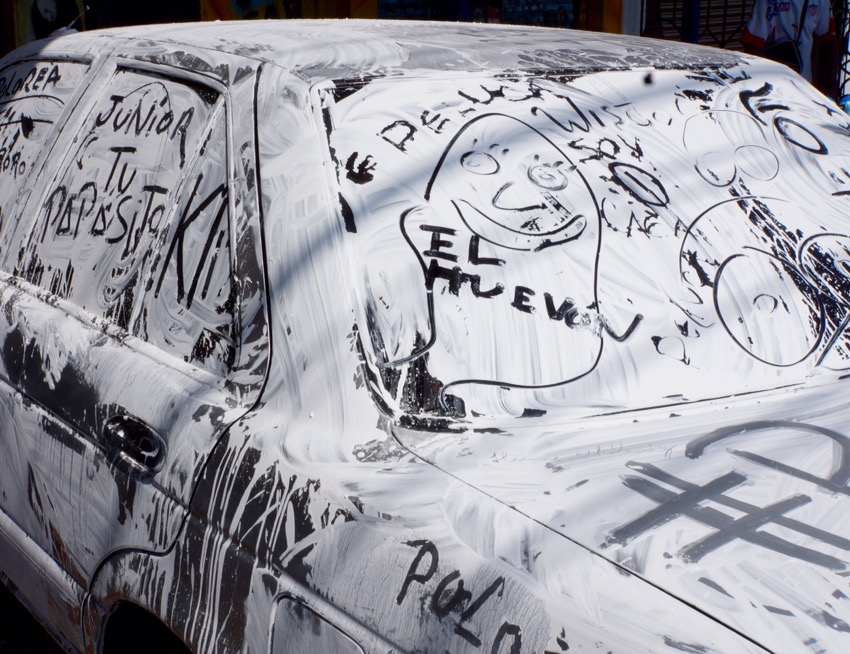 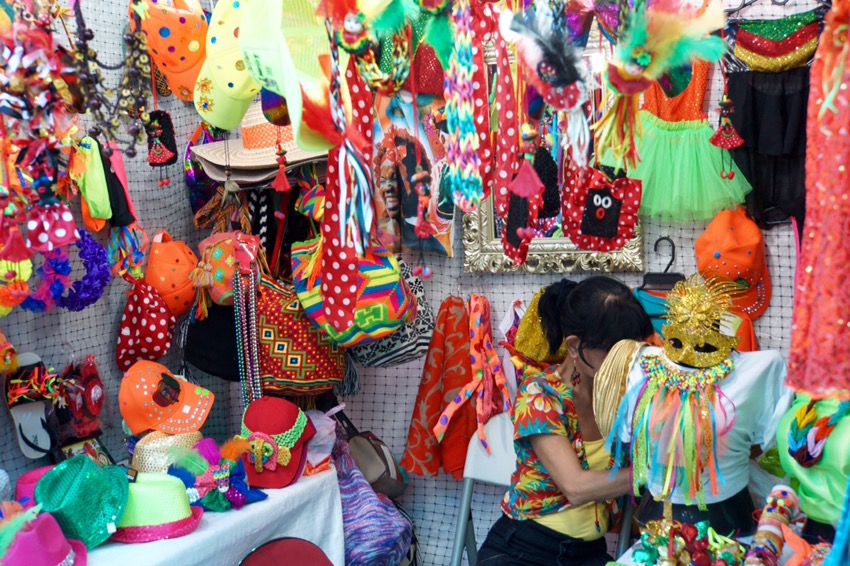

And the photography group told me that I needed to do a selfie of the gaudy t-shirt, so here goes.
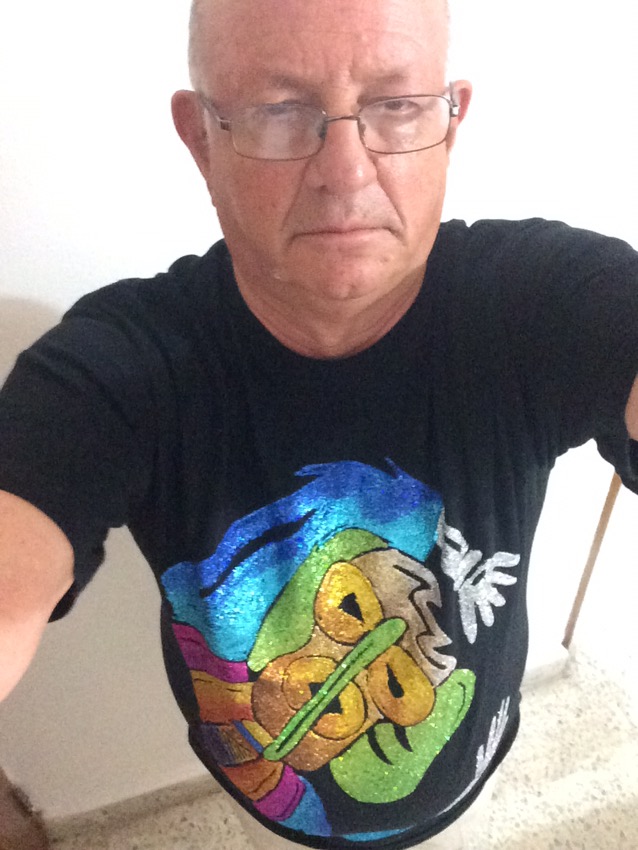
Prior to going to the big parade, there were folks outside our hotel, getting ready to participate.
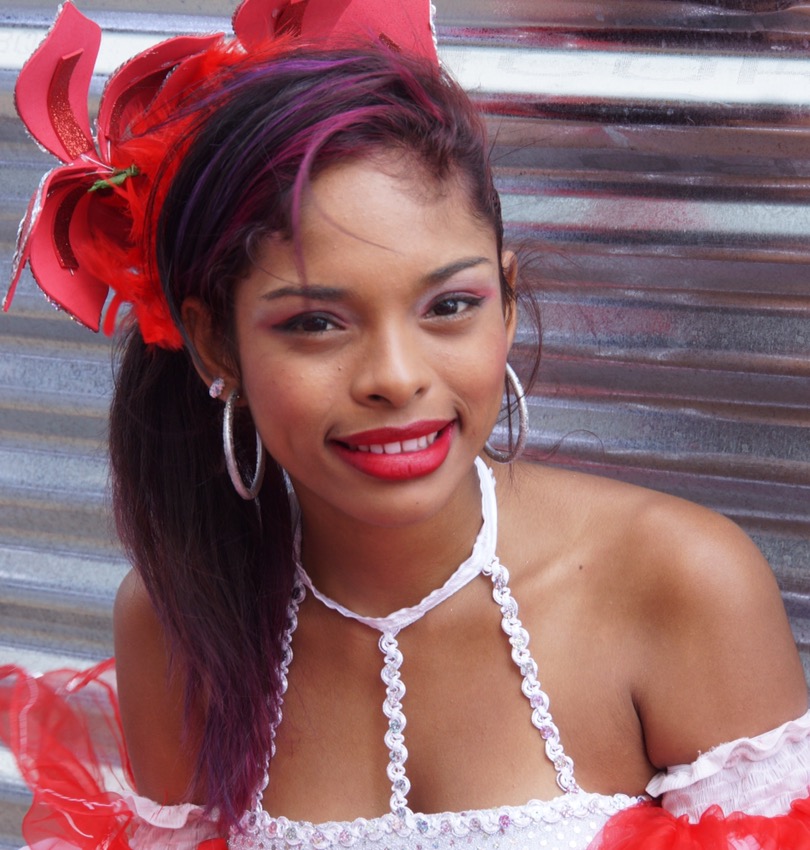 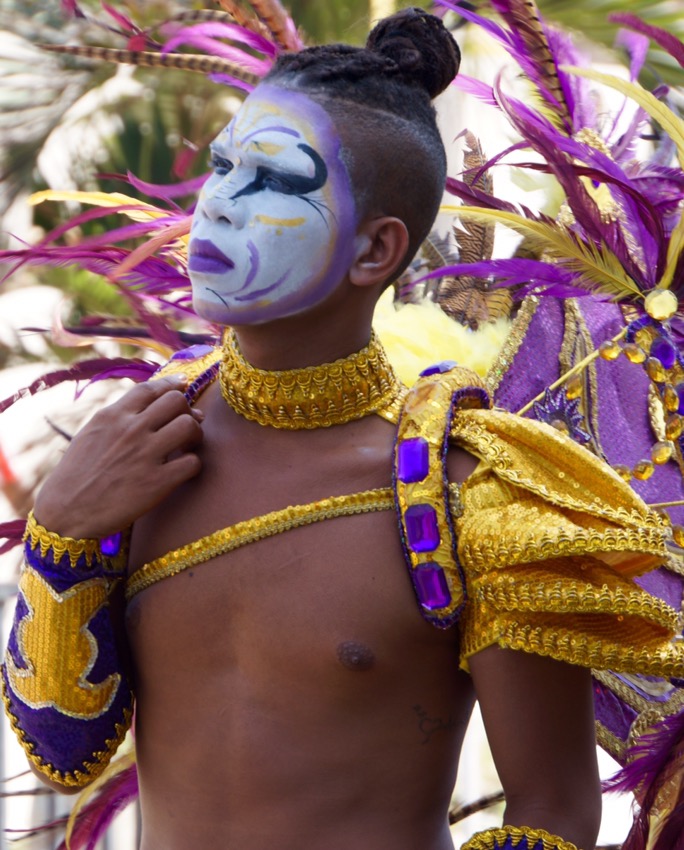
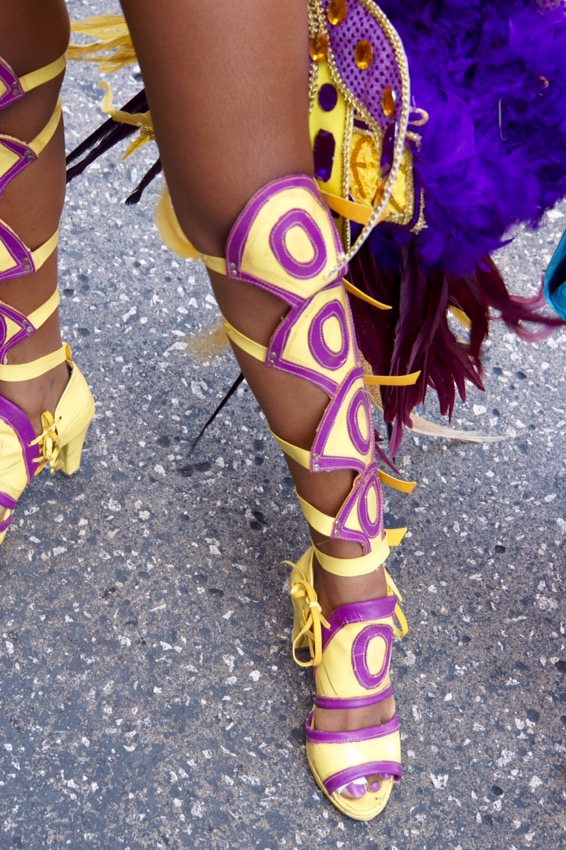 
Now for the main attraction — the chaos in all its glory! La Batalla de Flores (or the Battle of the Flowers) showcases the best-decorated and most elaborate display of floats in the parade. Celebrities, musicians, politicians and what seems like half the Caribbean is here to soak up the colors, the music and the costumes. And a few beers, too (a medical necessity because of the heat!
We participate as best we can, mixing it up with the locals and making images from the grandstands along the parade route. We spend three hours at the parade. While picture taking is difficult, it is far less difficult than last night, so I may have a few decent images. Below is almost a (too large) random sample, as I took probably at least 500 hundred photos and did not have time to look at them. Several are intentionally blurry in an attempt to convey the sense of motion.
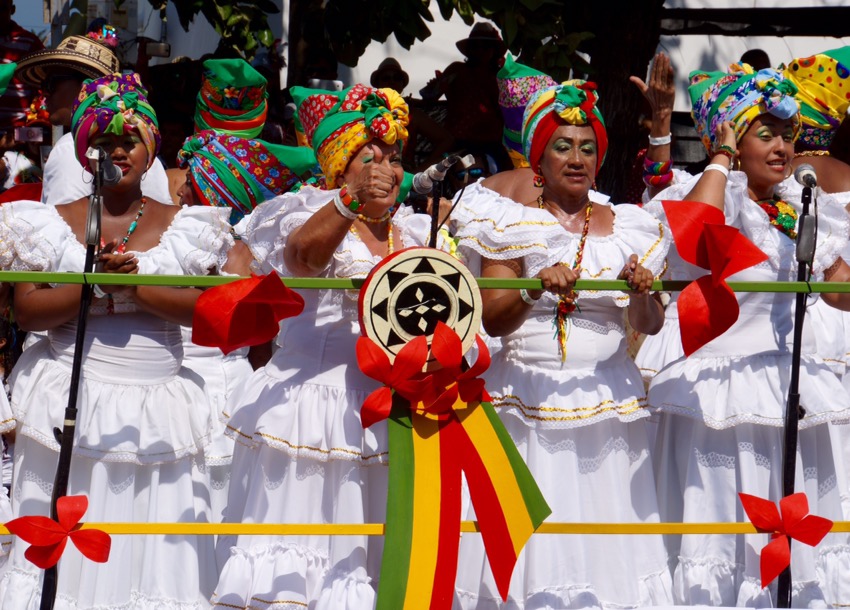 
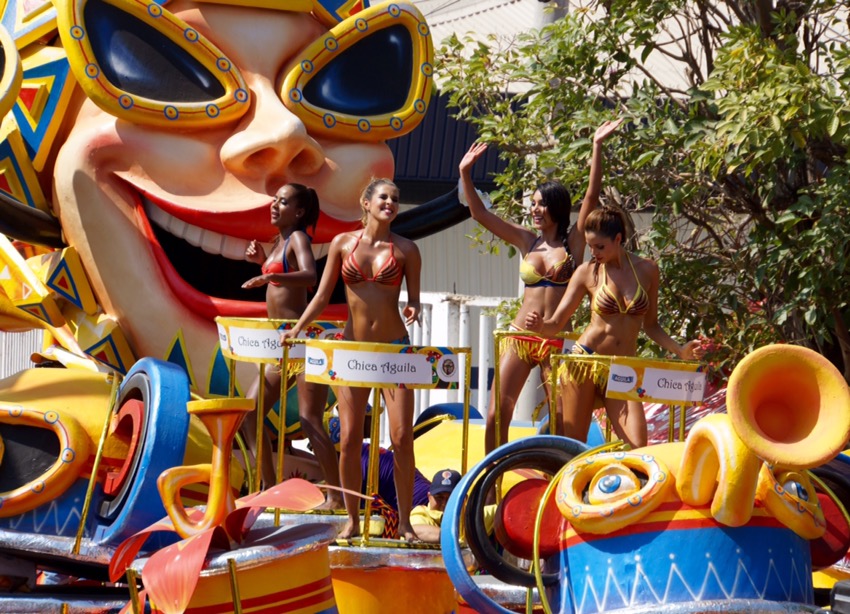 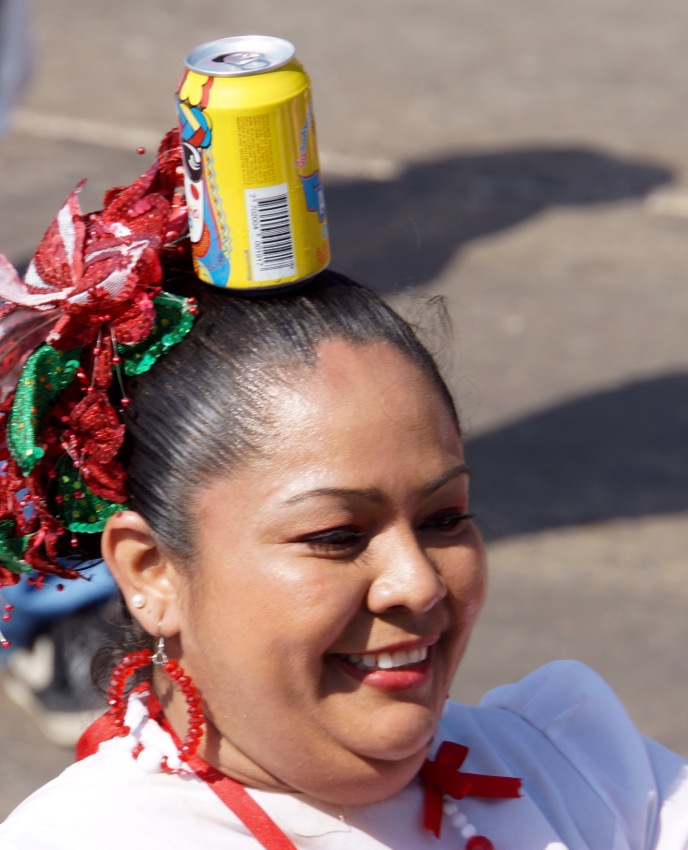
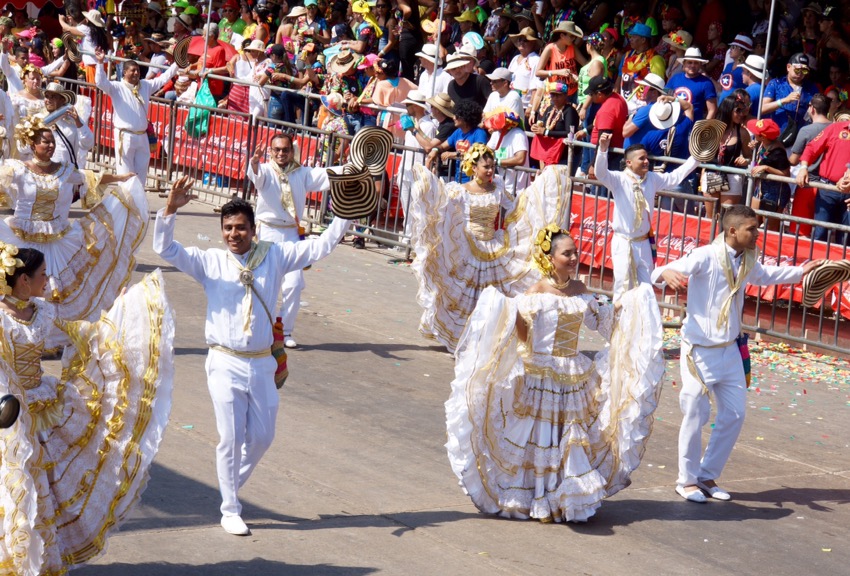 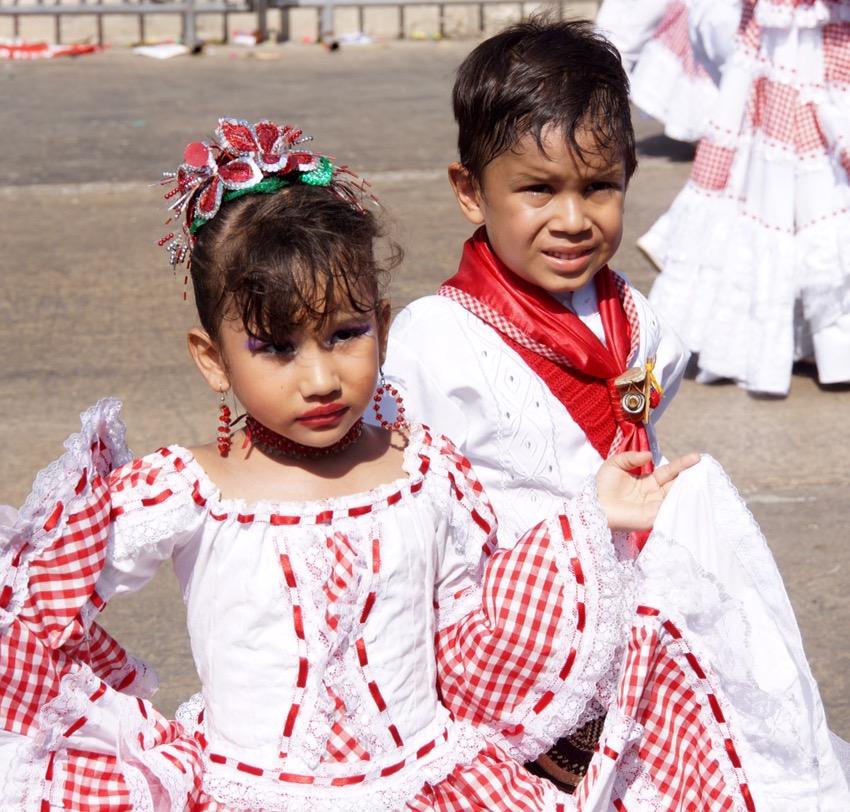
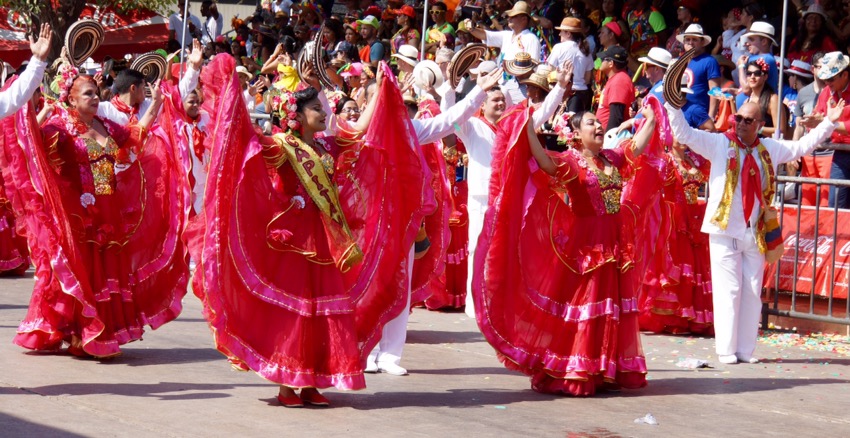 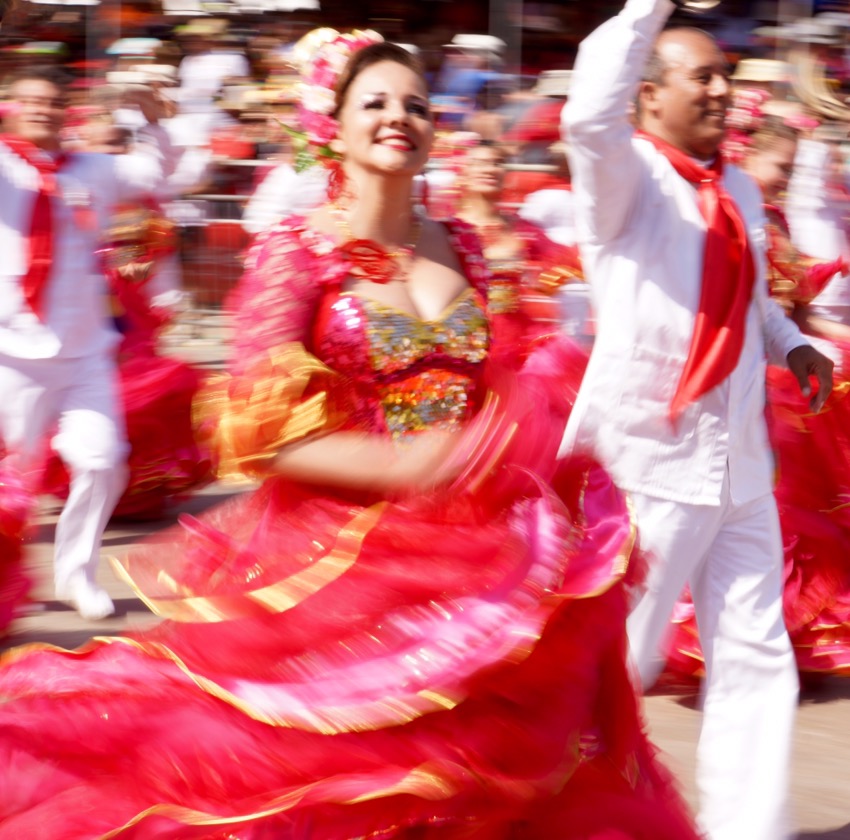
 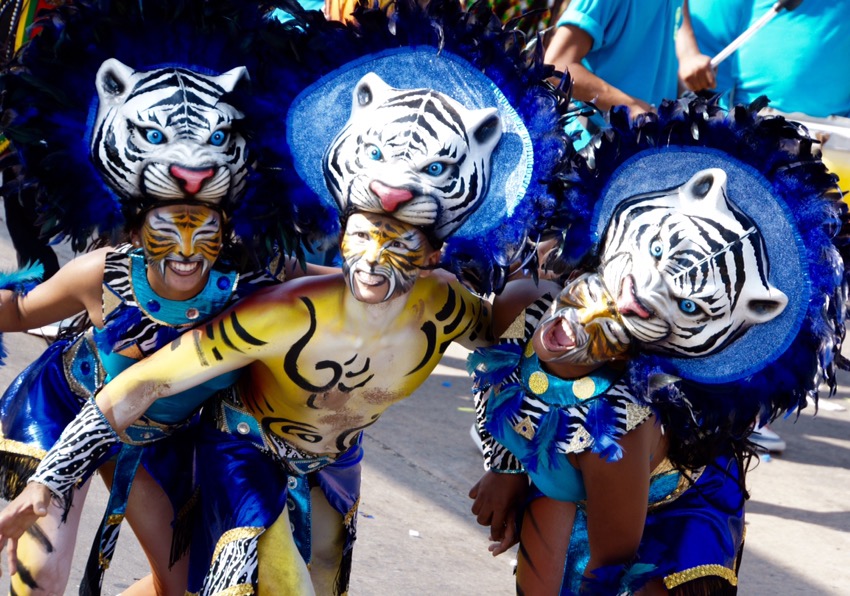
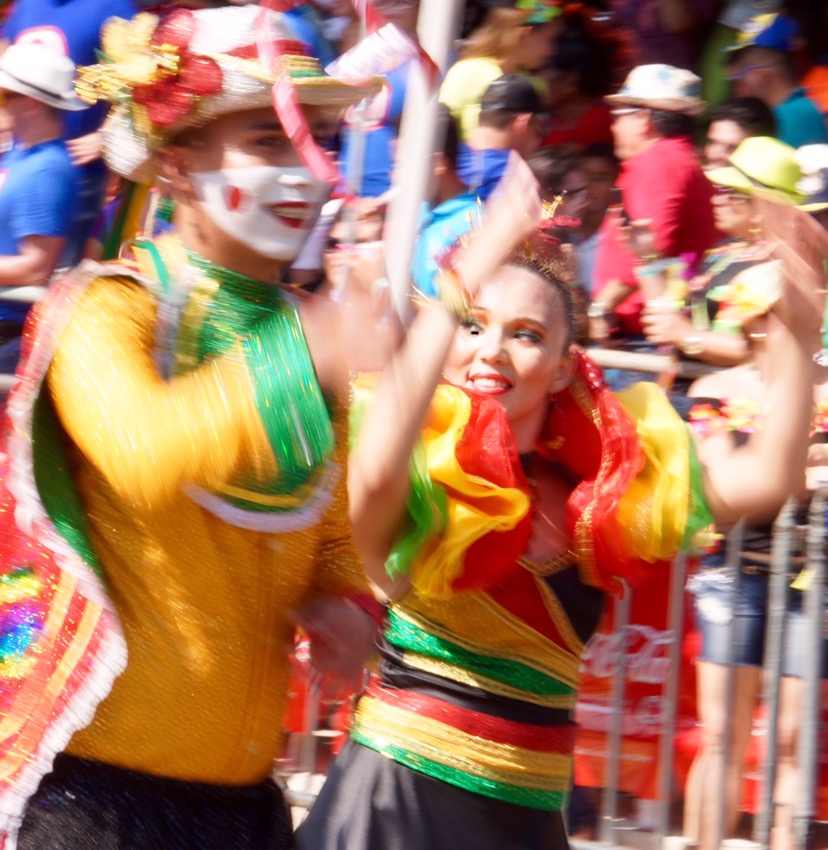 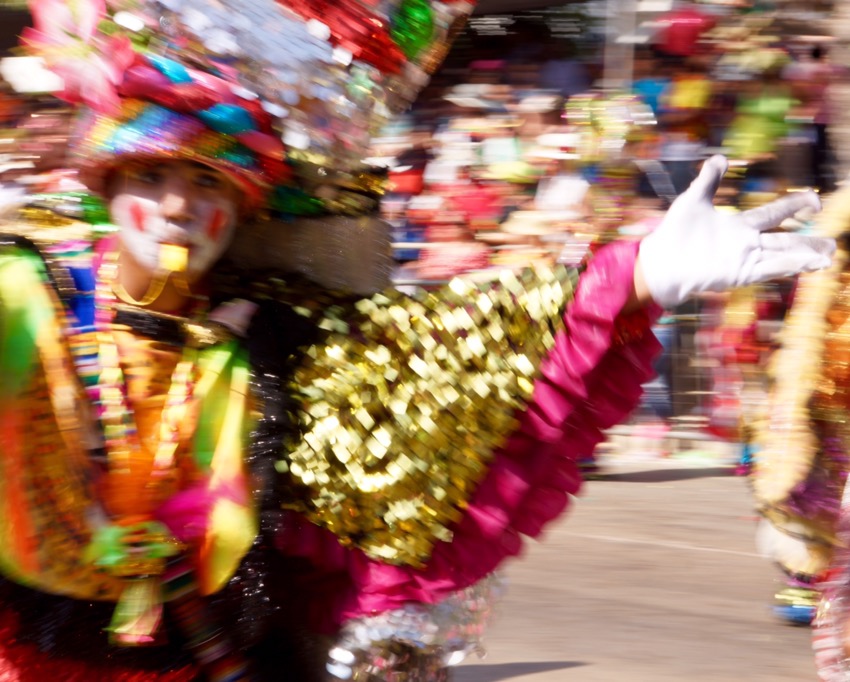
 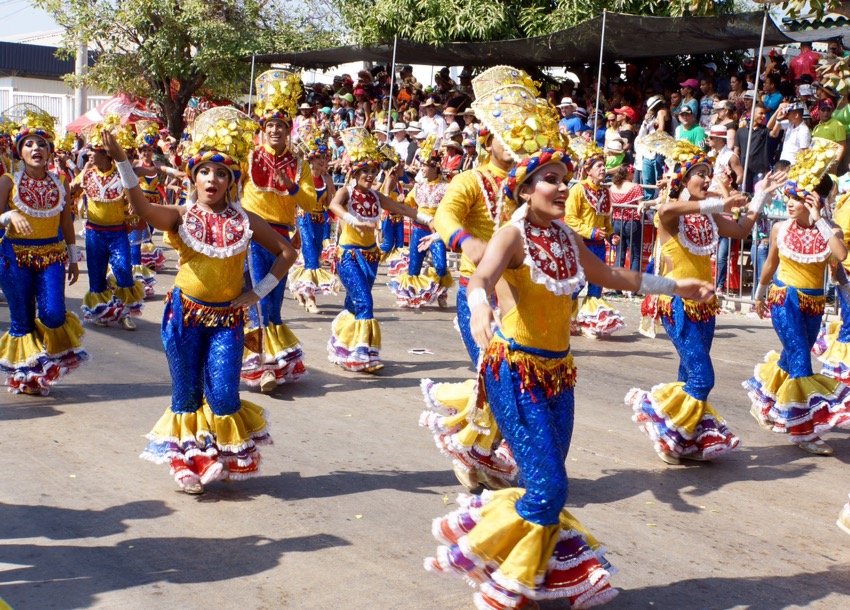
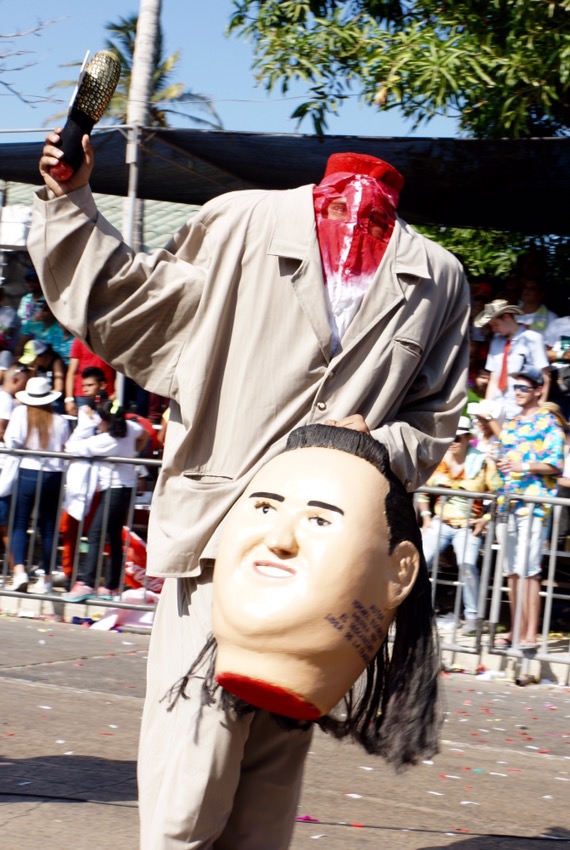 
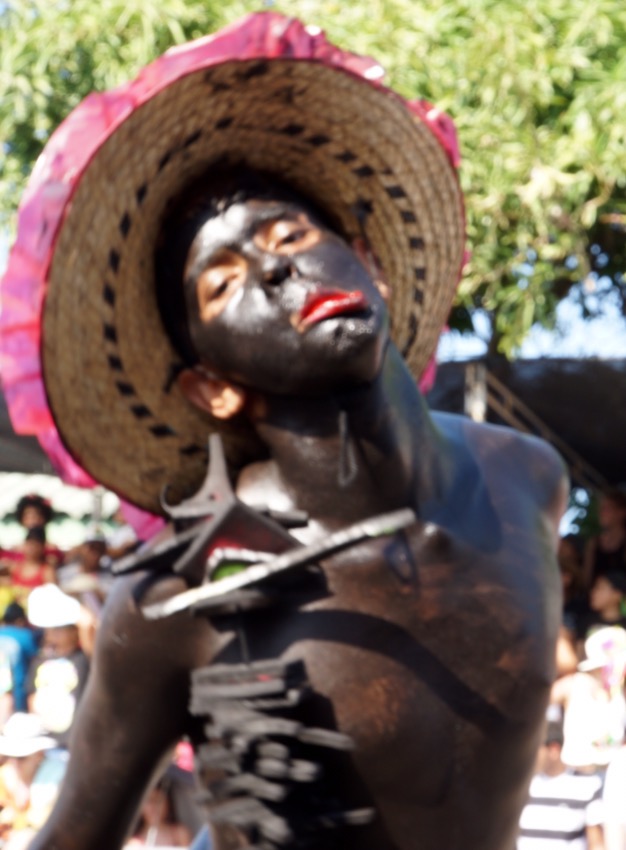 
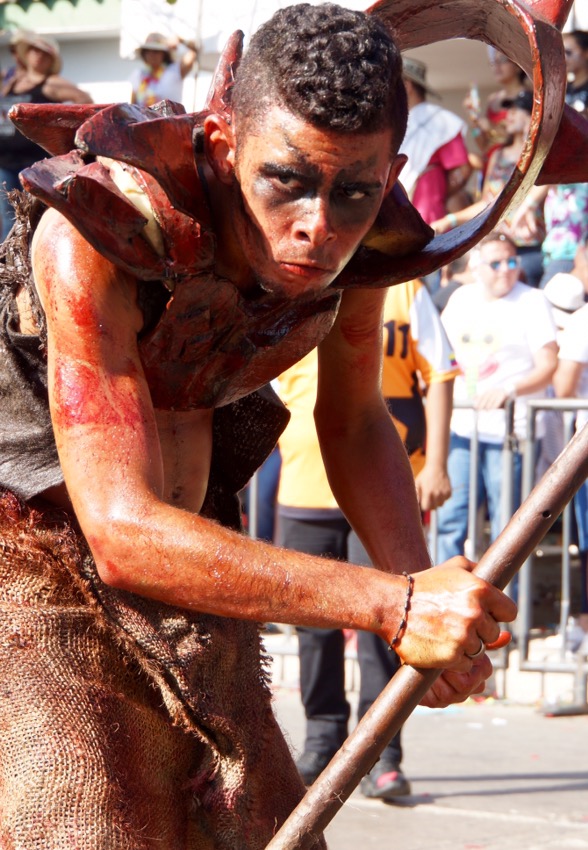 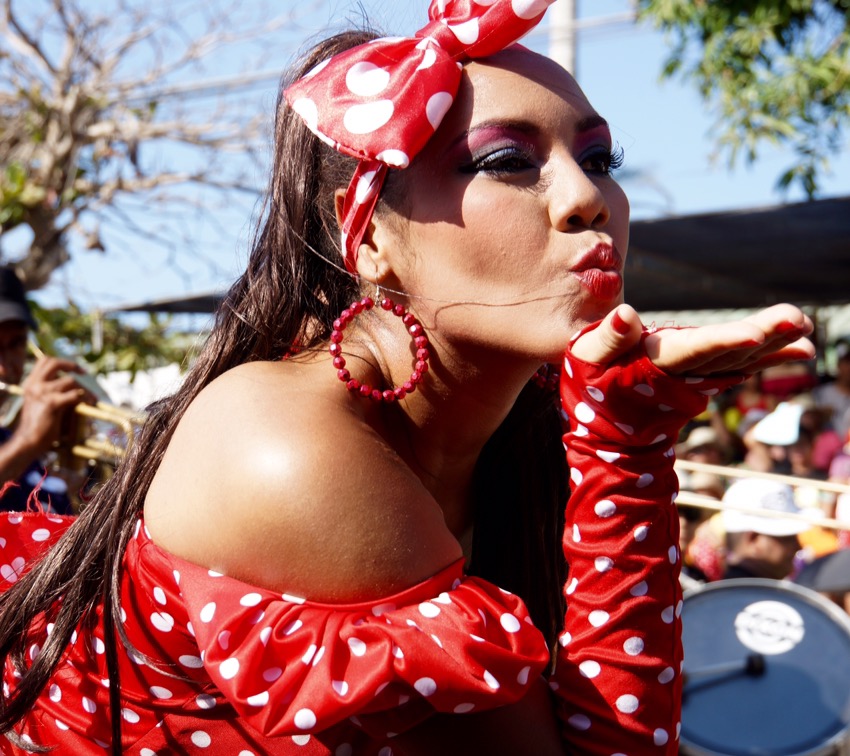
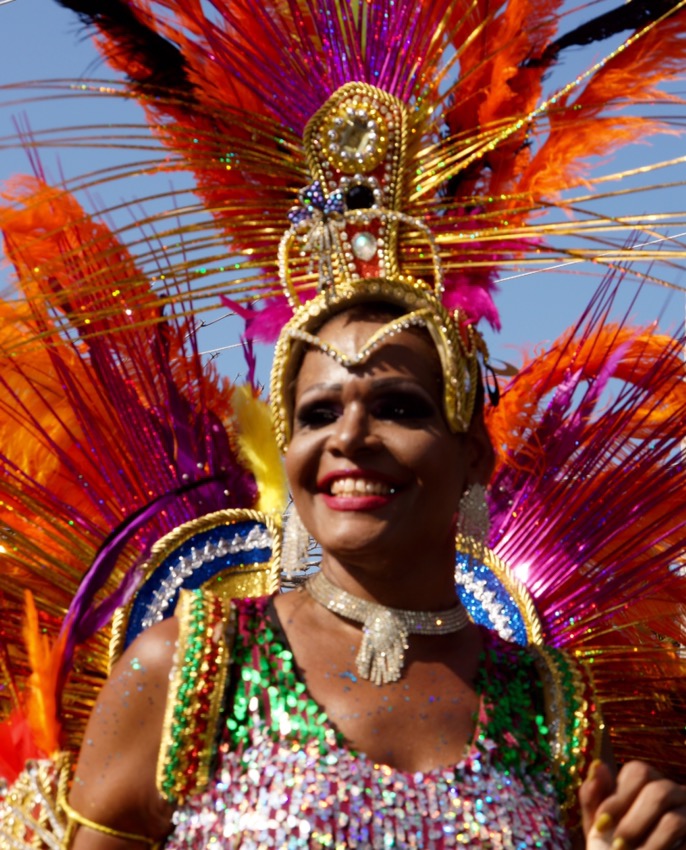 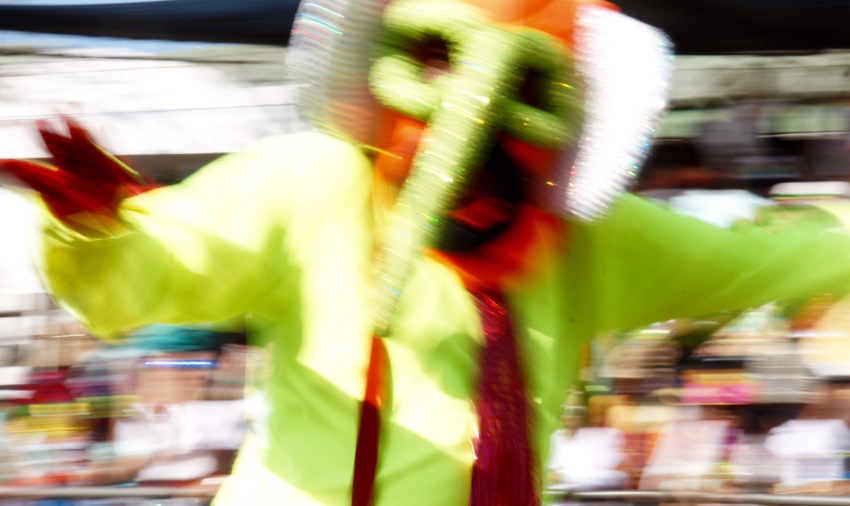
 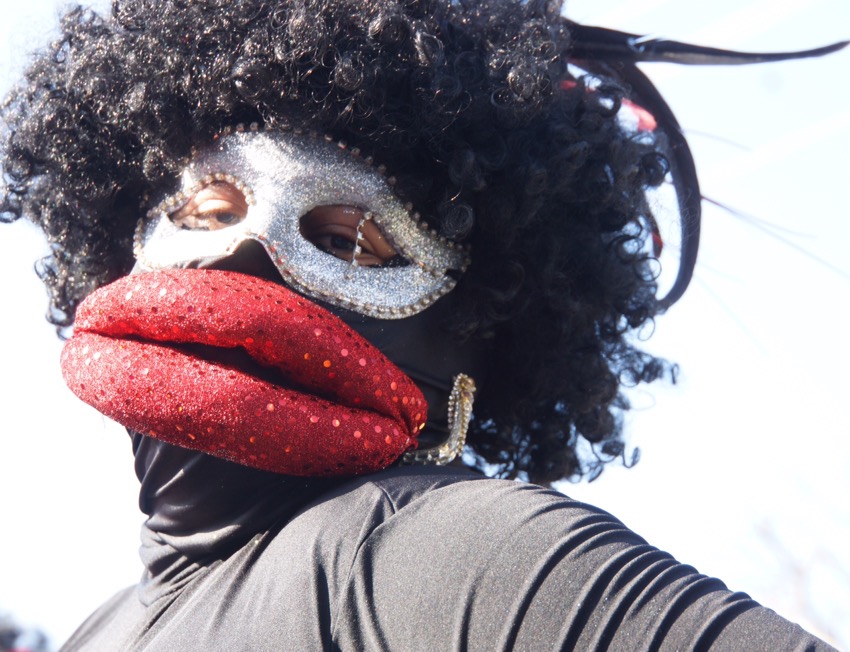
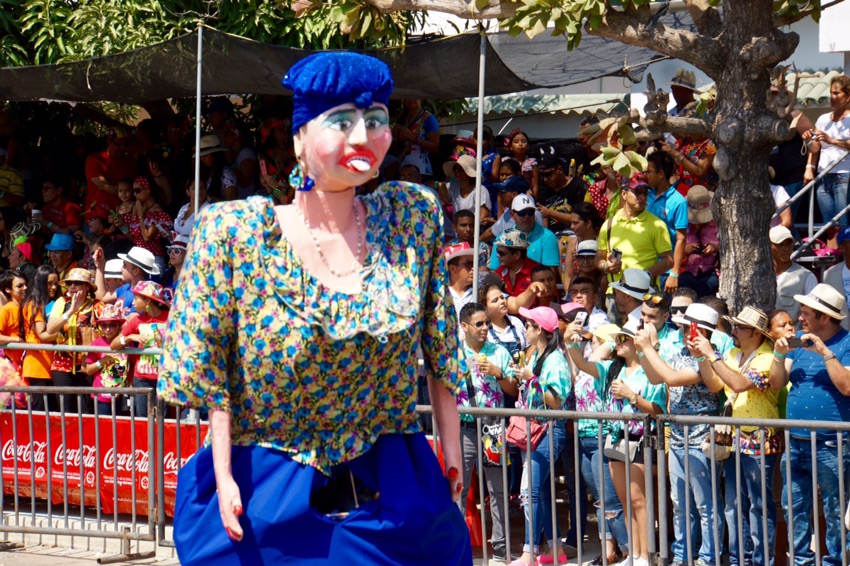 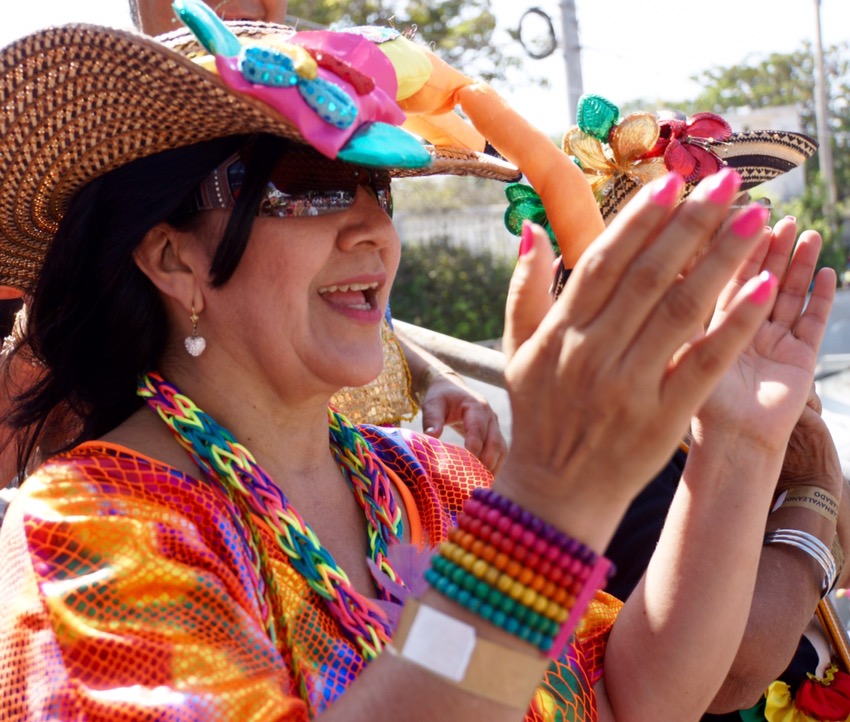
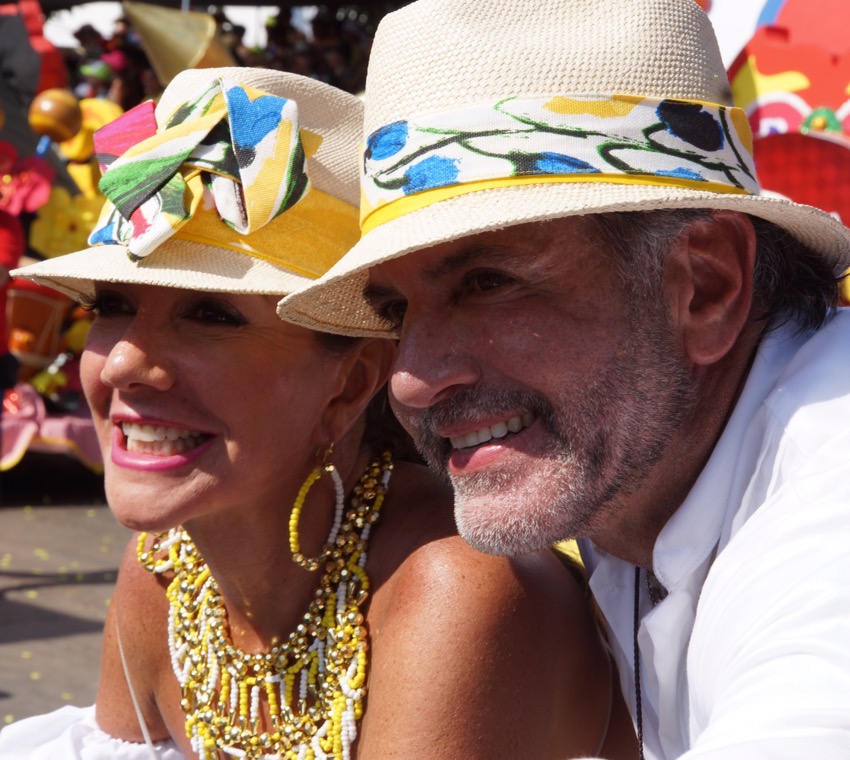 
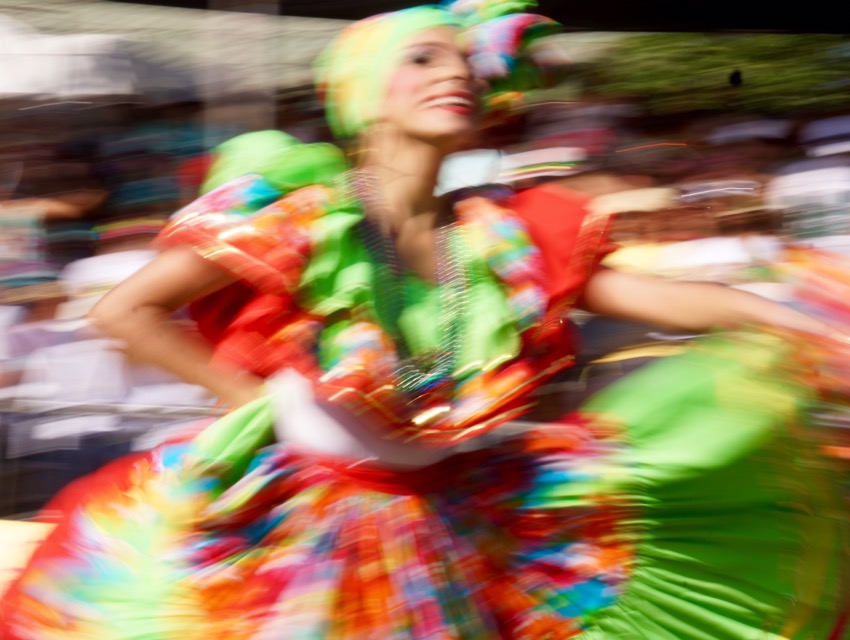
We head back to our hotel to rest, relax and reload. A big local parade down our street has the street cordoned off. We wind up on the wrong side of the street, so to get to the hotel, we have to walk up a couple blocks and actually walk back in the parade, becoming a bit more a part of carnaval than we’d intended. The plan was to photograph the local parade, but I’m paraded out, so I’m happy to use the time to wash up, blog and relax.
Excellent dinner at Arabe Gourmet, part of the historical component of the area has been the influx of Lebanese…we appreciate their sacrifices (though we could have done with somewhat less of the loud, live carnavalesque music that reverberated for about twenty minutes). Back to the hotel to finish the blog, and pack for tomorrow
February 5
After an early breakfast (5AM) we leave for our one-hour flight to Barranquilla, arriving late morning. We drive through traffic (which has been very heavy both in Medellin and here) to Hotel El Monterrey, which Nevada describes in our itinerary like this (Please note, this is the most expensive basic, itsy bitsy hotel room you will ever have because costs quadruple during carnival time. However it is clean and has AC. Oh, and a free t-shirt!). Nevada’s description is accurate (including the free t-shirt. The hotel will do quite fine, though, for two nights.
We gather in the back of the hotel for some advice from Nevada on the night photography we’ll be doing tonight, use of low light, flash, adjustments we might make. The number of things to think about is daunting, and her discussion makes it clear how much I do not know. Still, she is very patient and up beat, and despite the different equipment people on the trip have, Nevada is able to deal with all of us, our questions and our different levels of experience. The main message is to have fun, not get frustrated, try out many different approaches and remember that if we get only one or two good photos, that’s success. This is tough photography, and we should expect a lot of failures.
We pile into four taxis and drive through more heavy traffic to the place where we are to have lunch. Only problem: the restaurant has moved. Eventually, we all gather and walk about three blocks to a restaurant a guy we spoke to on the street suggested, and we wind up having quite a good lunch. Some of us (including the writer of this blog) bag the walk and shopping trip we’d planned for after lunch to escape the heat and take a long nap that should serve us well for tonight’s carnival activities.
For supper, we head to a famous haunt of Gabriel Garcia Marquez, La Cueva, which is significant to me, as I think Garcia Marquez may be the greatest novelist of all time. The place is full of photographs and other memorabilia of Garcia Marquez and the other writers and artists of Baranquilla who frequented this restaurant. Unfortunately, they are too busy tonight to walk us around the place and explain, but Nevada buys a big book that we’ll be able to look at later.
After dinner, we leave for one of the many inaugural events to Carnaval, Noche del Tambor. This is the second largest traditional festival in the Americas as well as the biggest (and supposedly more traditional) Carnaval celebration outside Rio de Janeiro. Each neighborhood or group spends the entire year training, decorating and planning their dances, costumes, floats and music.
We spent about three hours, along with many thousands of others, dancing around in a wheel as music blared. The crowd was festive and completely into it, making it great fun. Here’s a sample of what we saw.
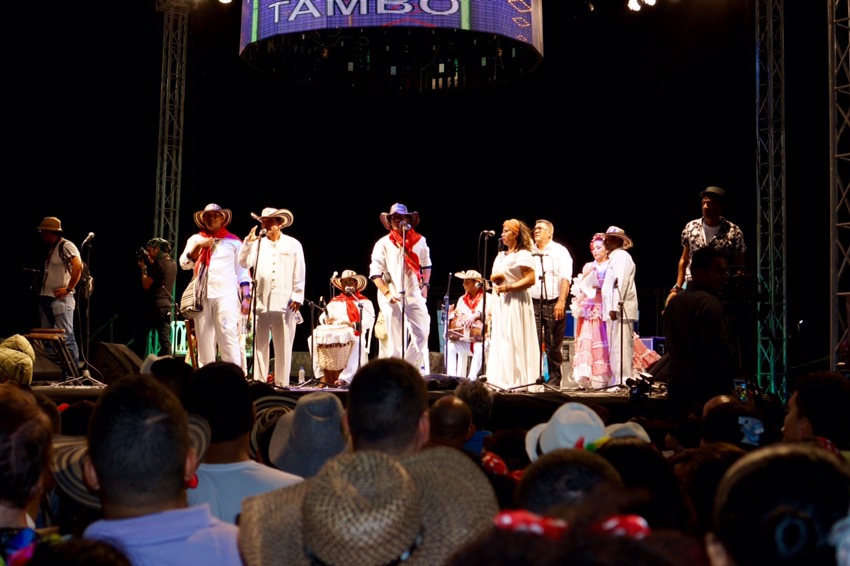 
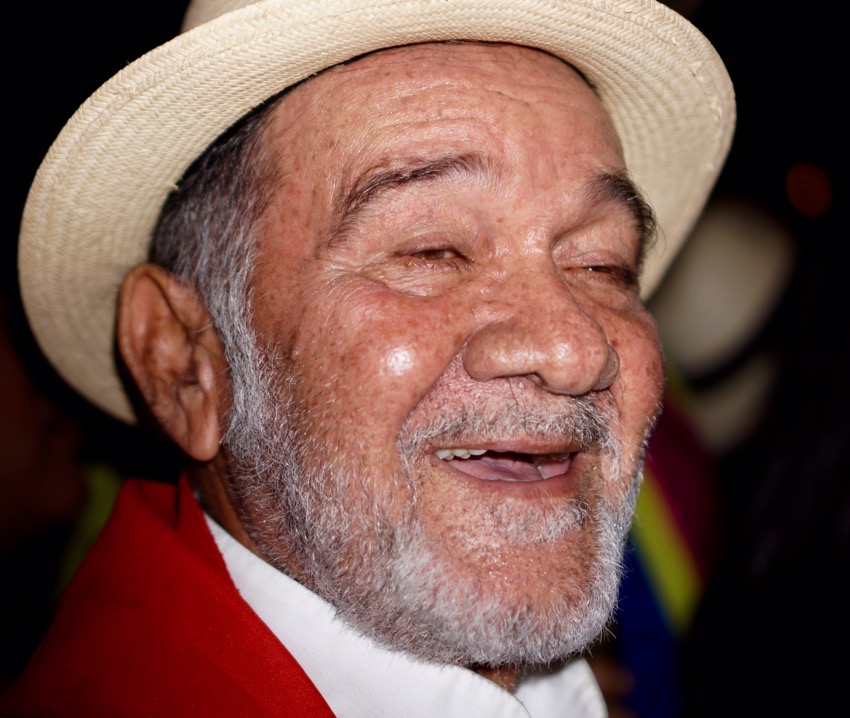 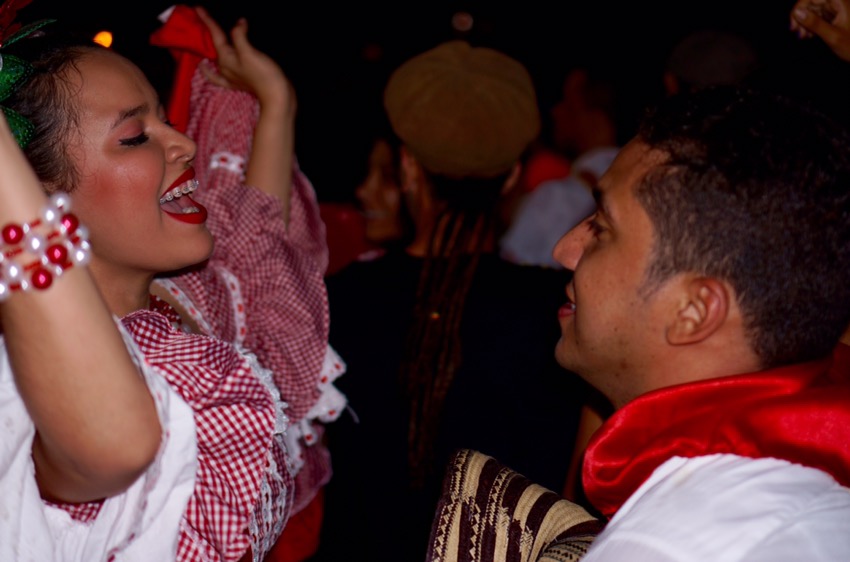
 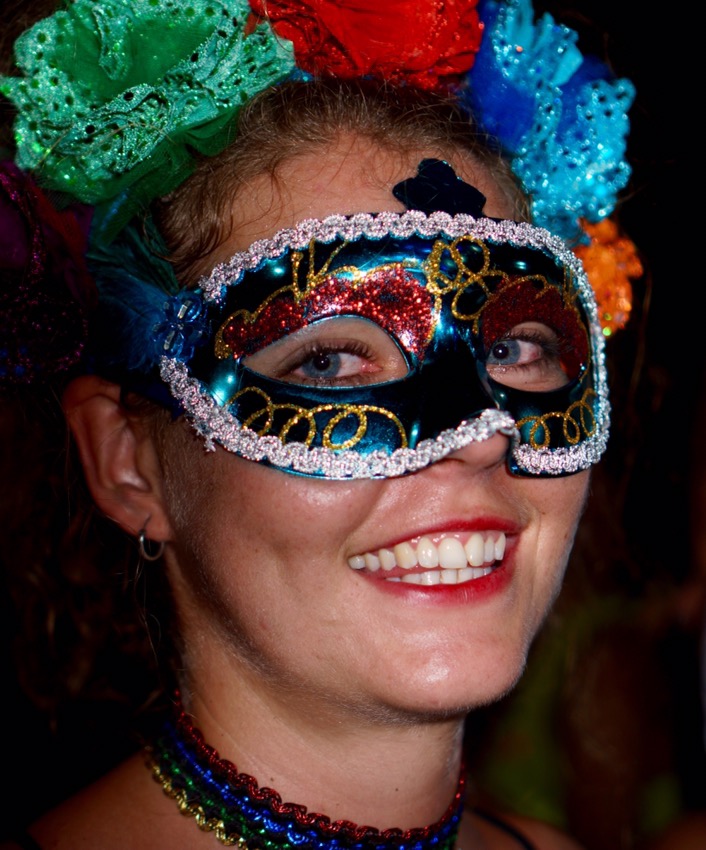
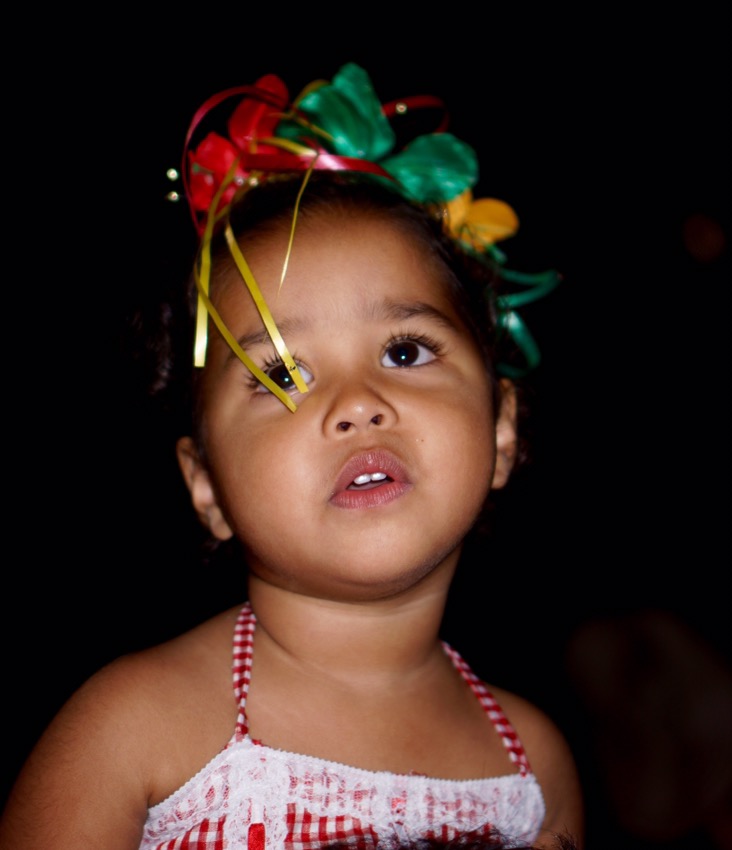 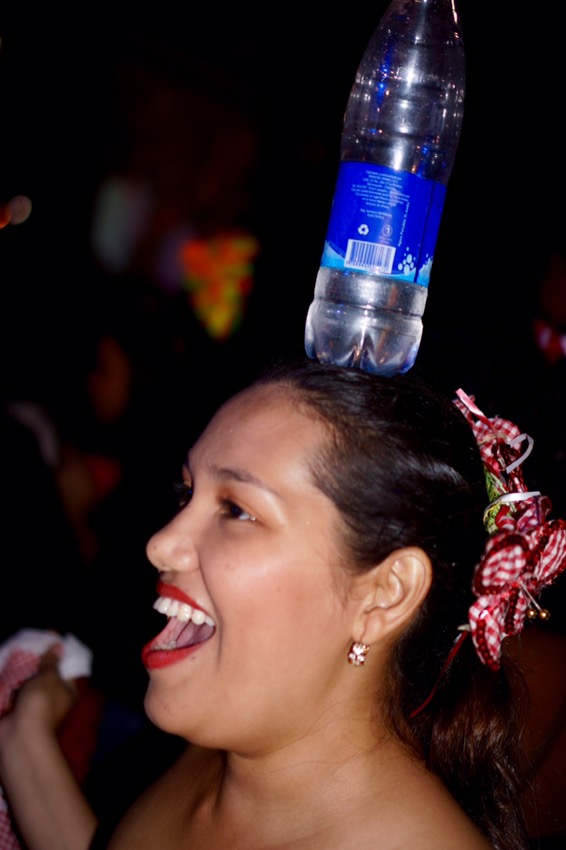
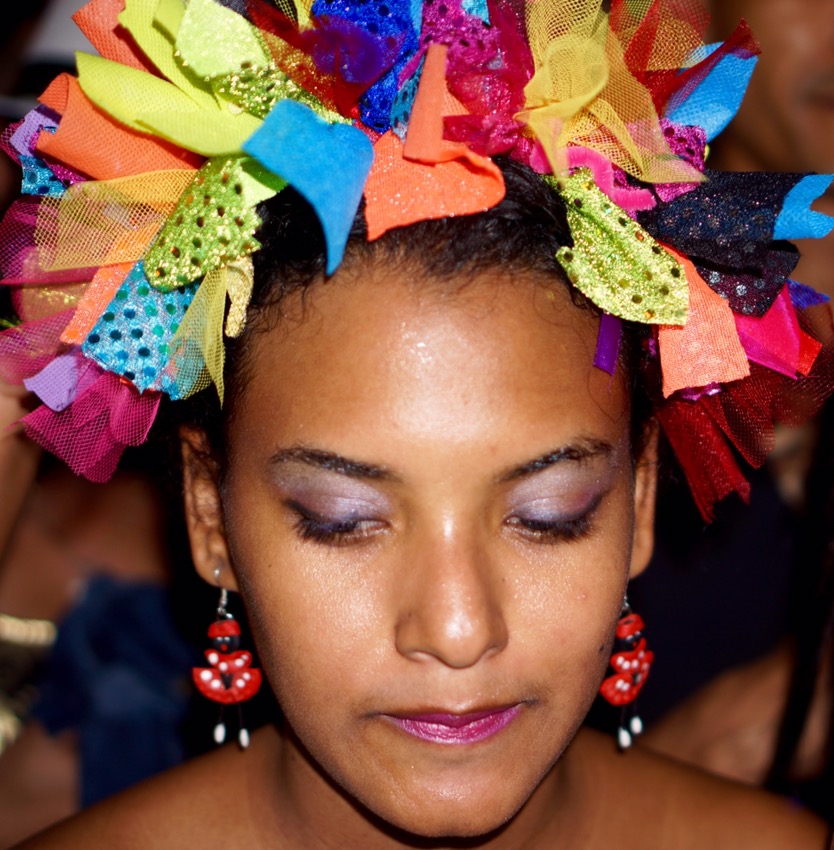 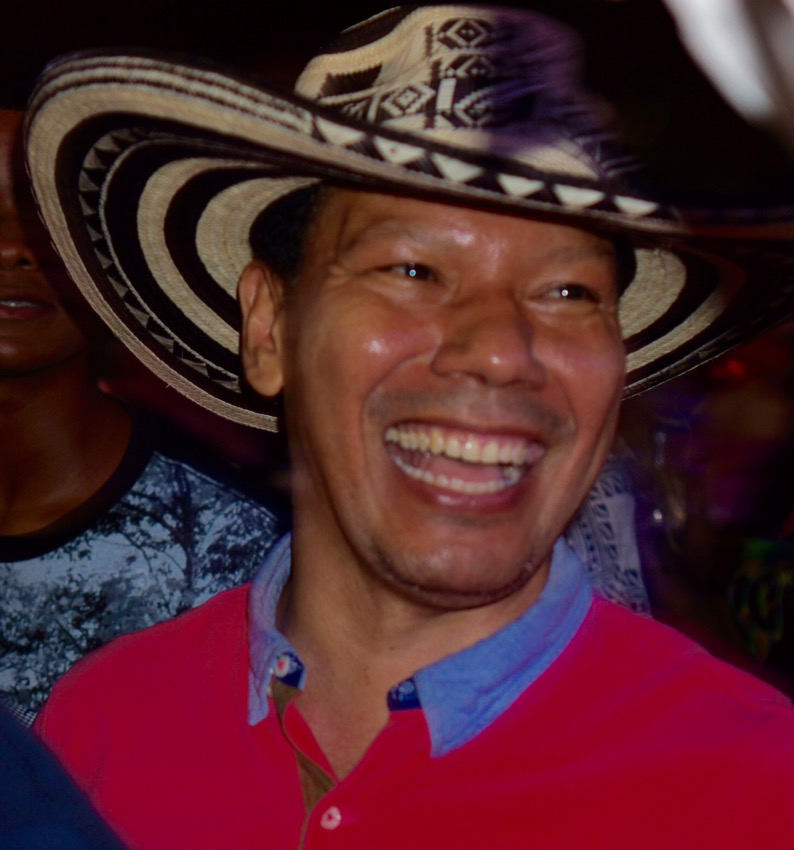
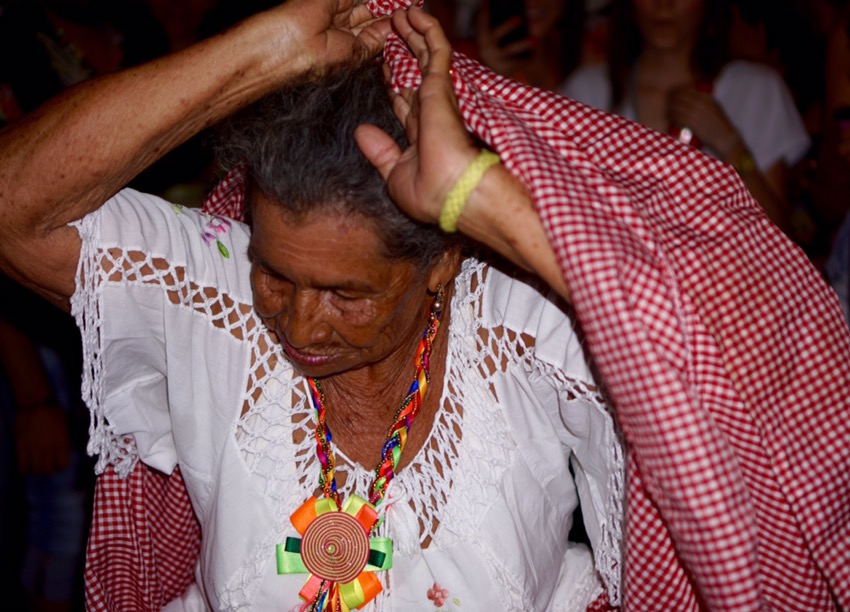 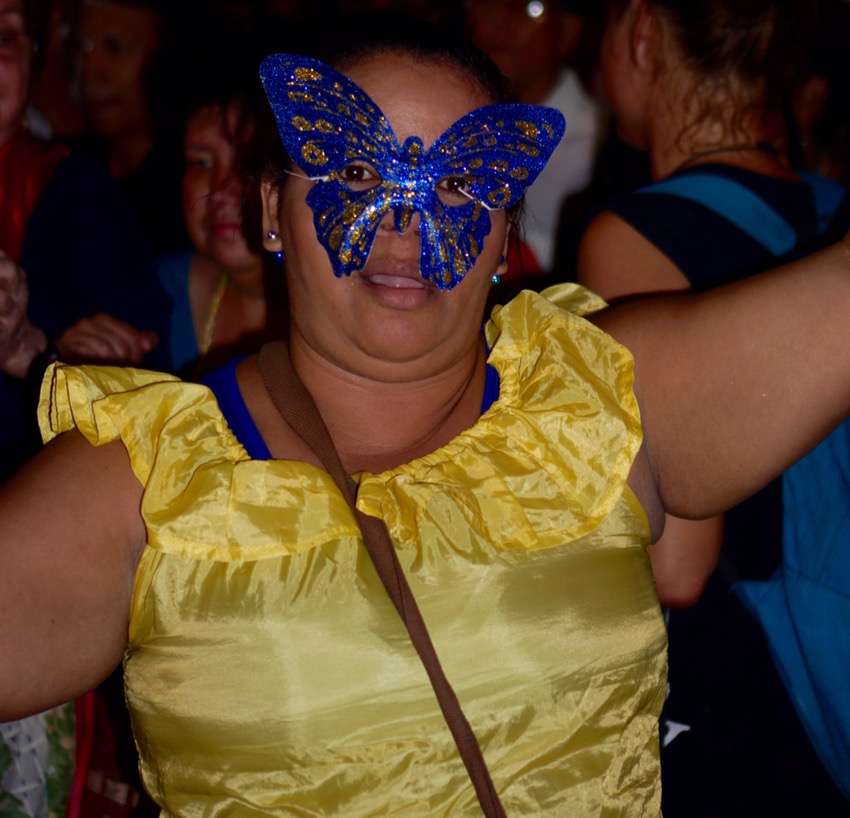
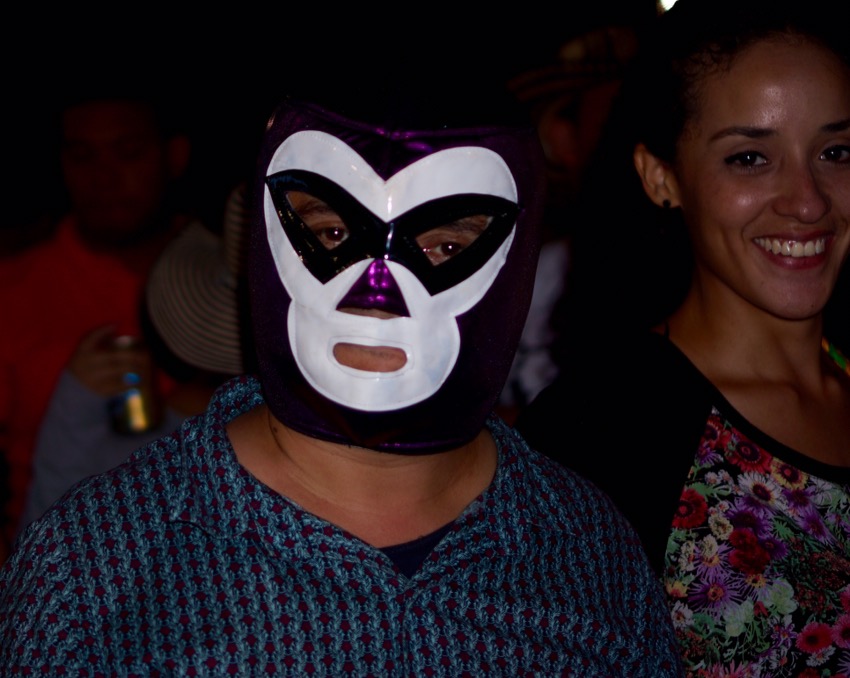 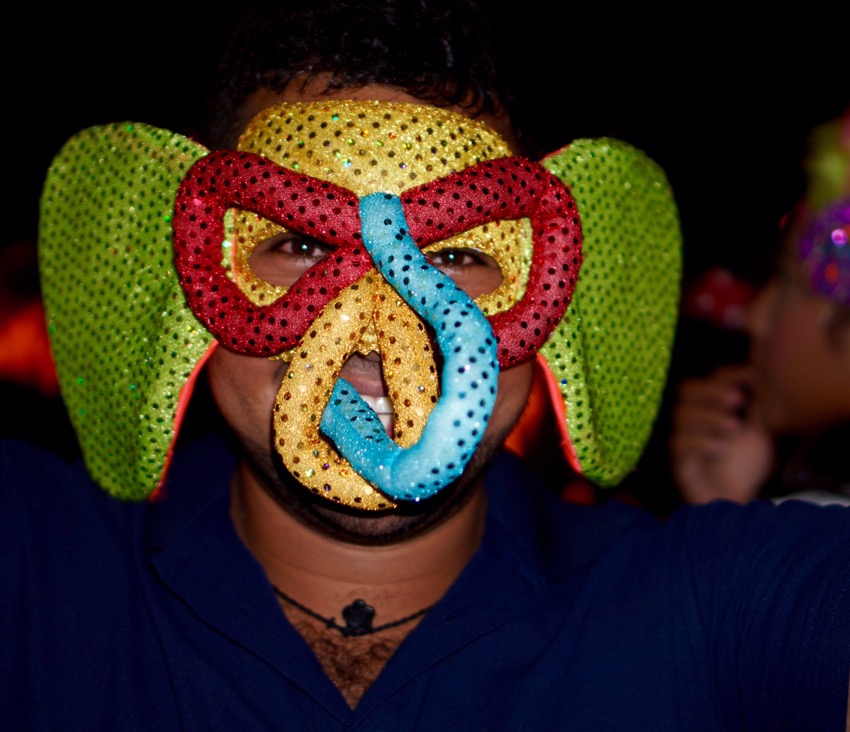
 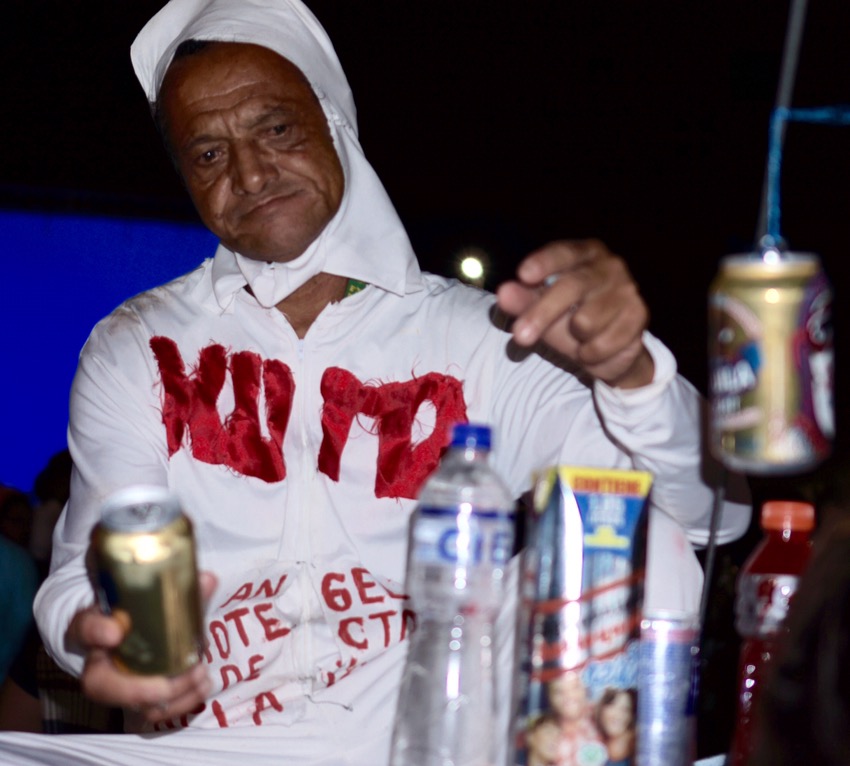
|
|




























































































































